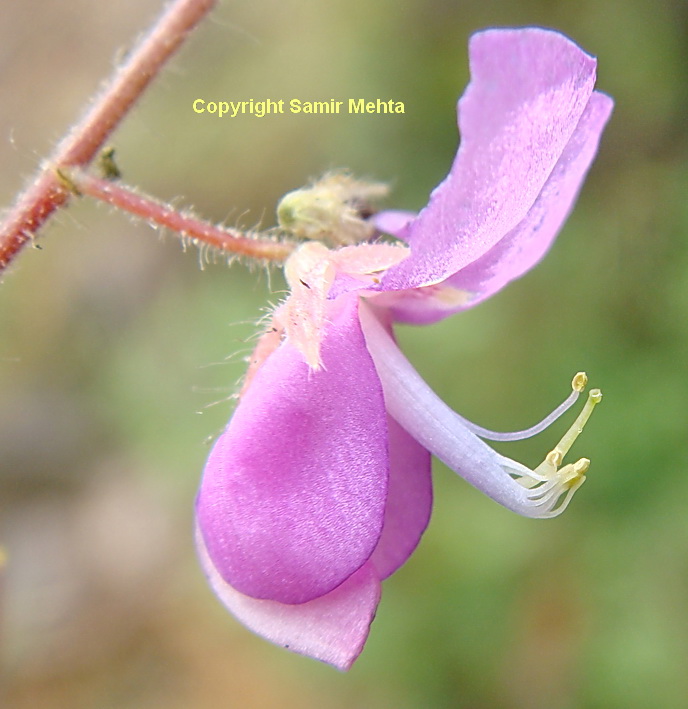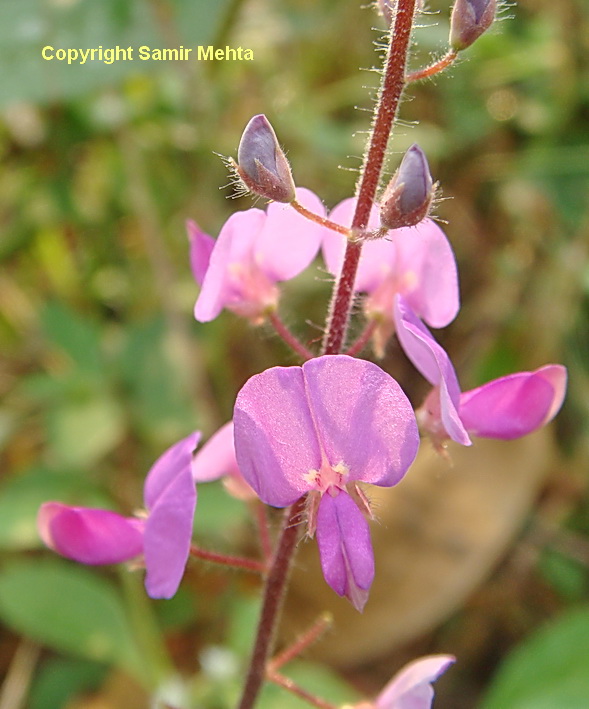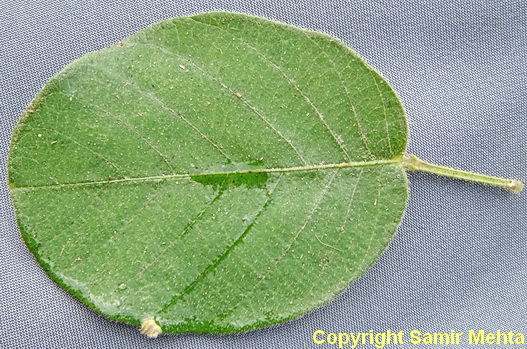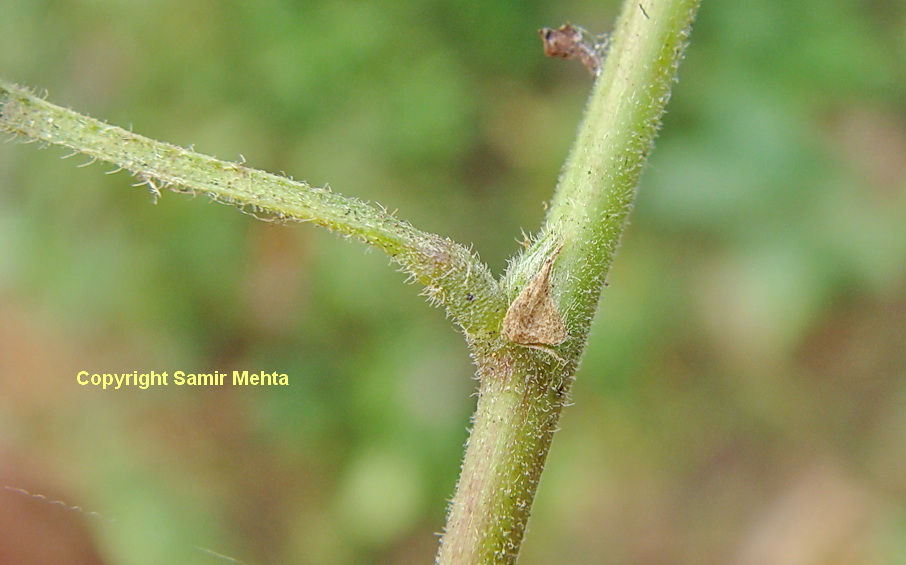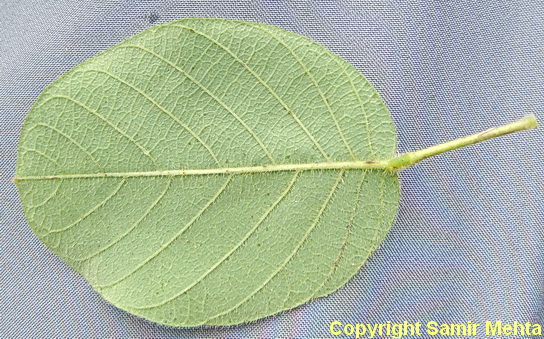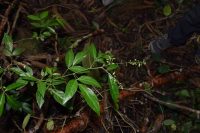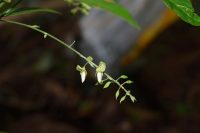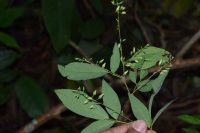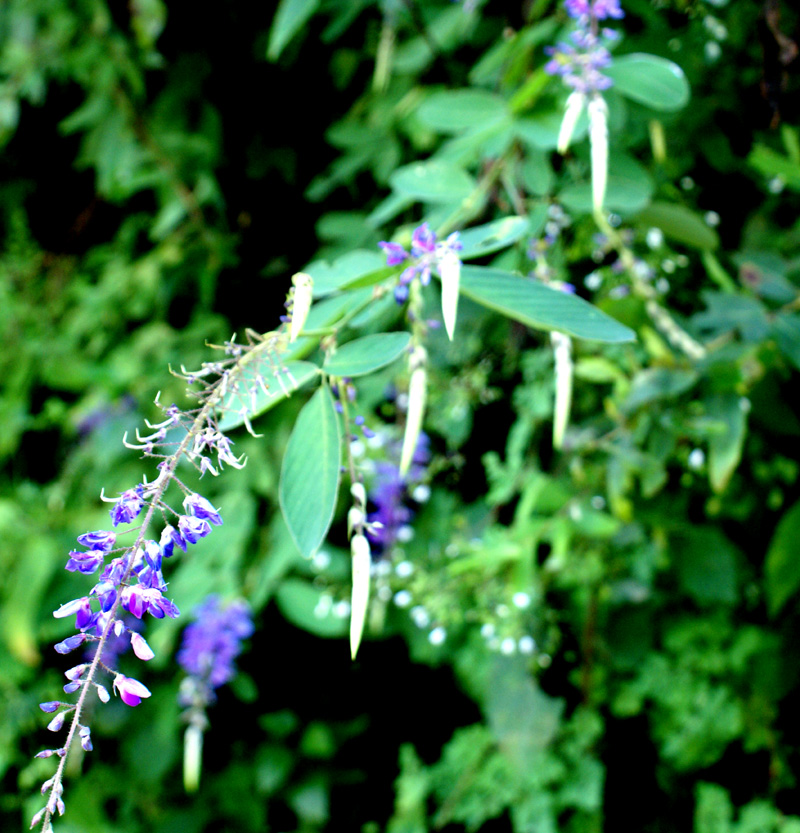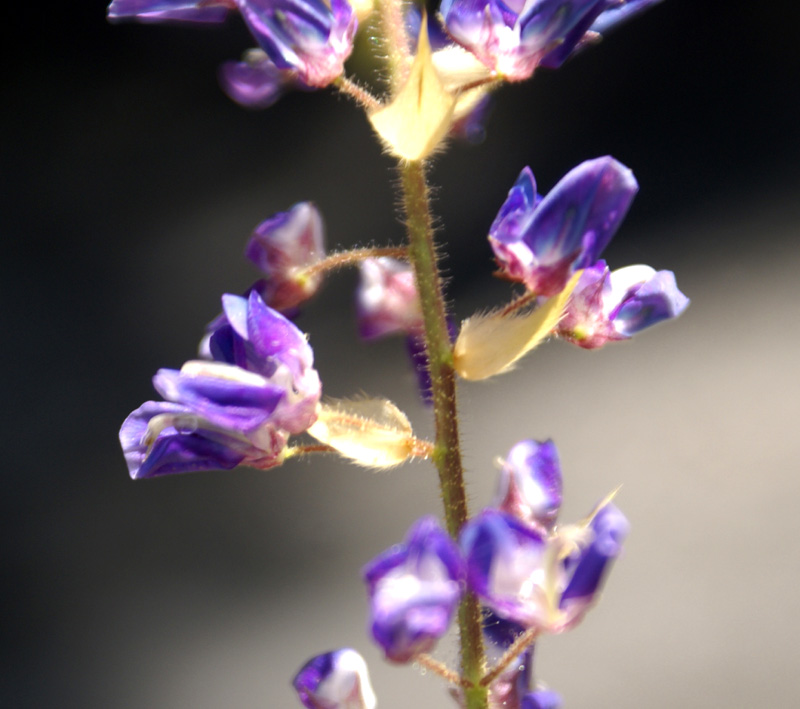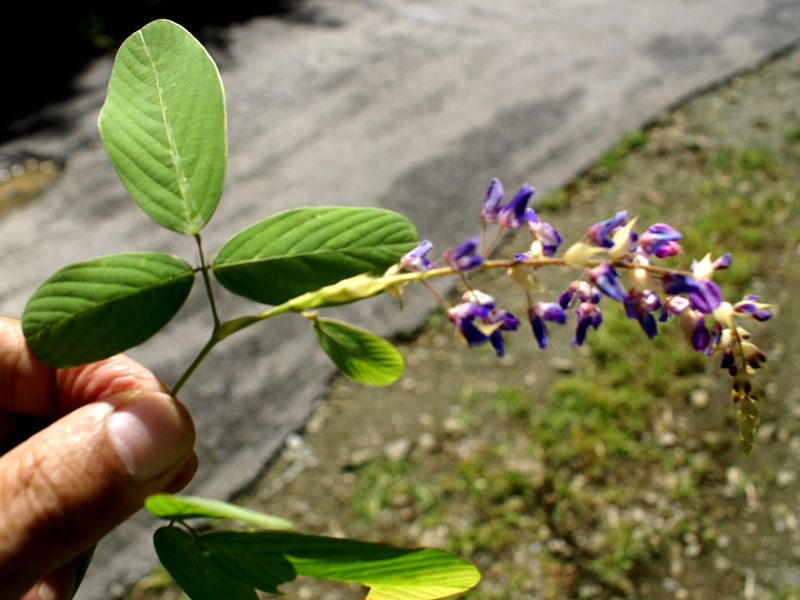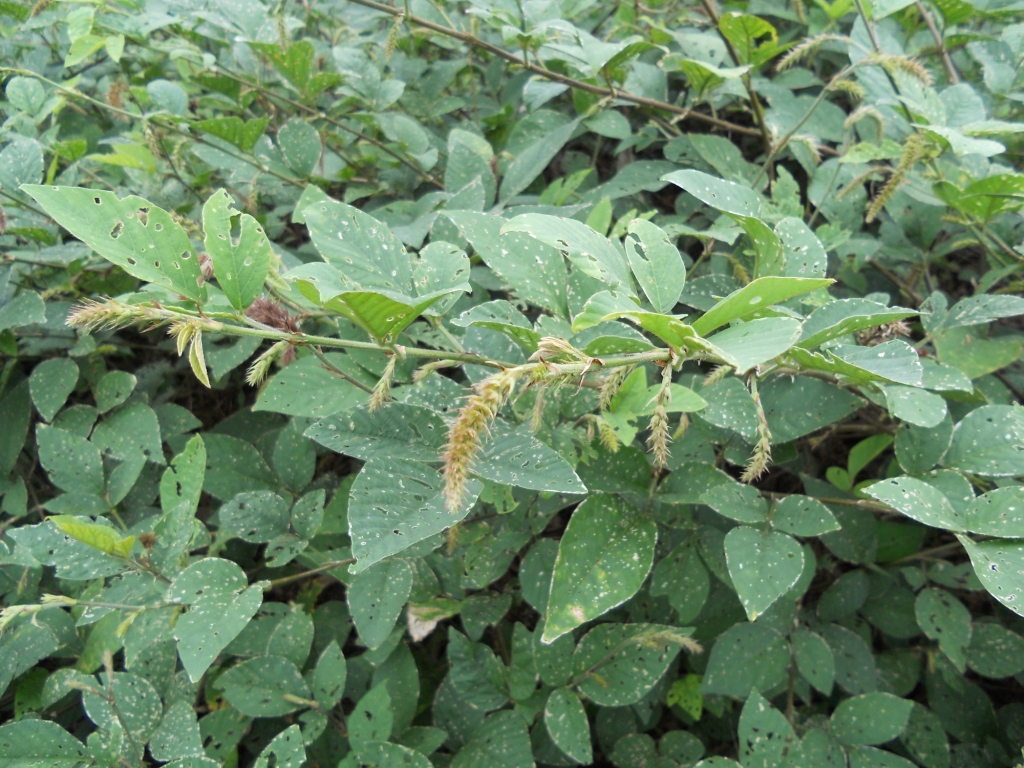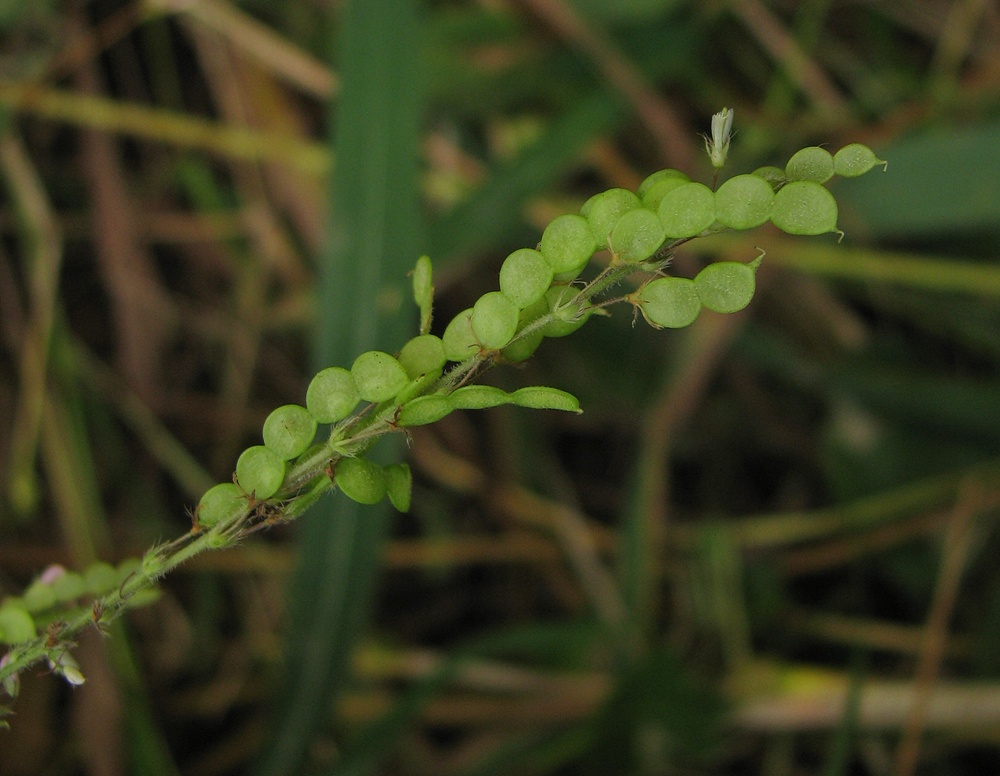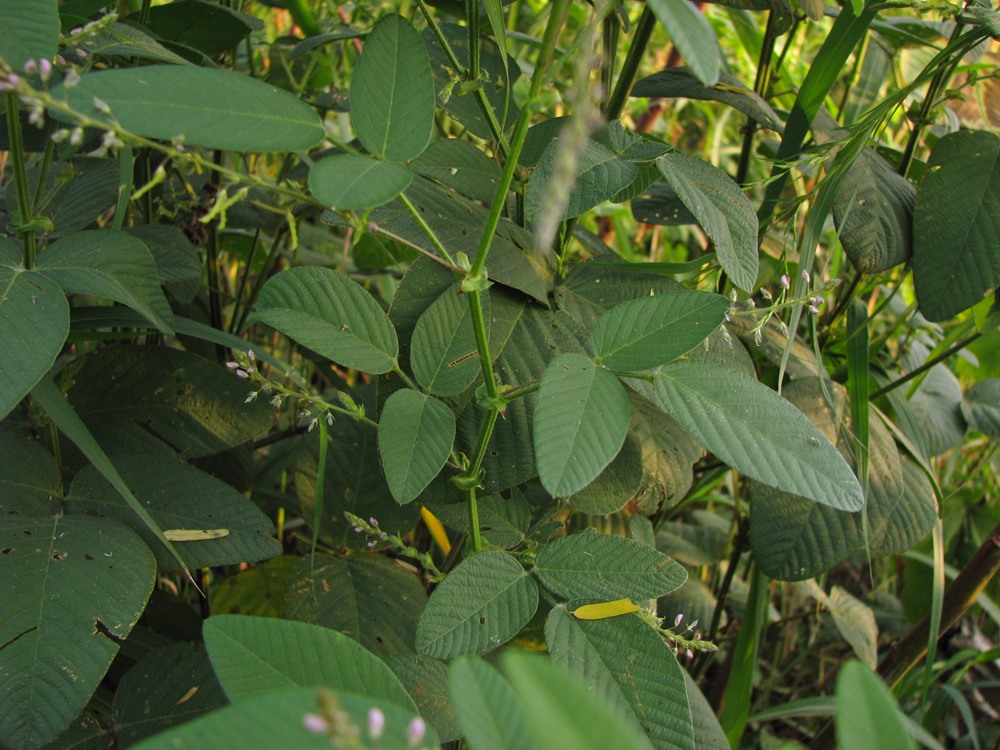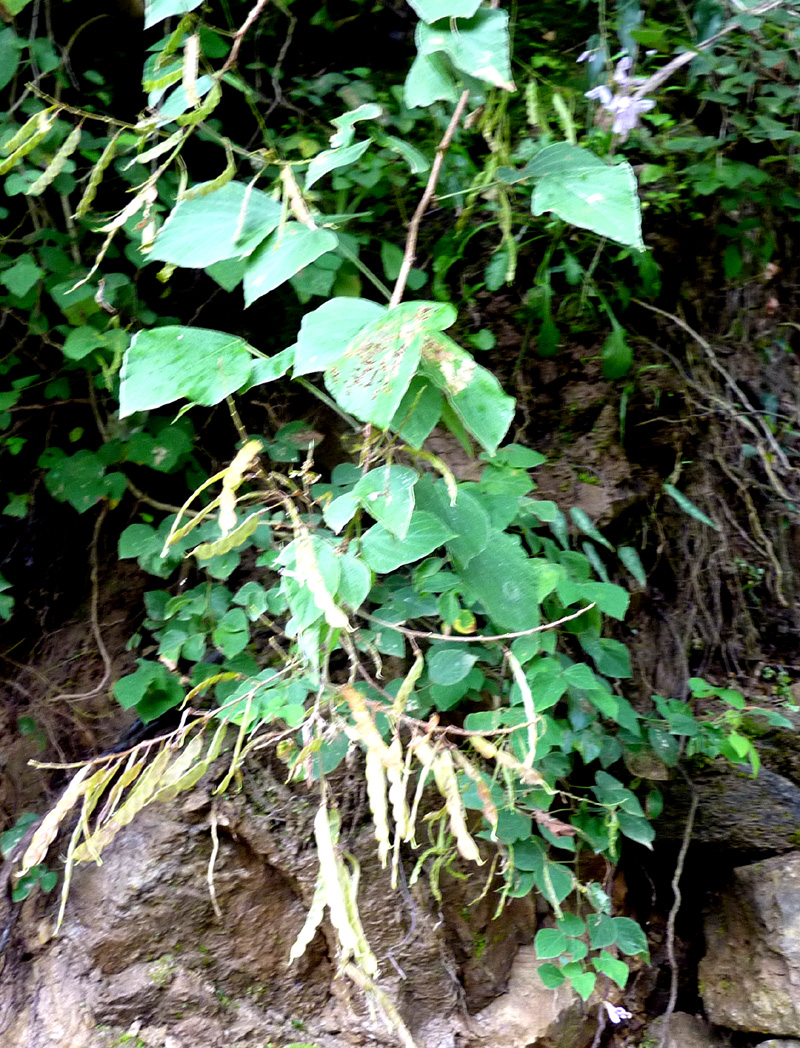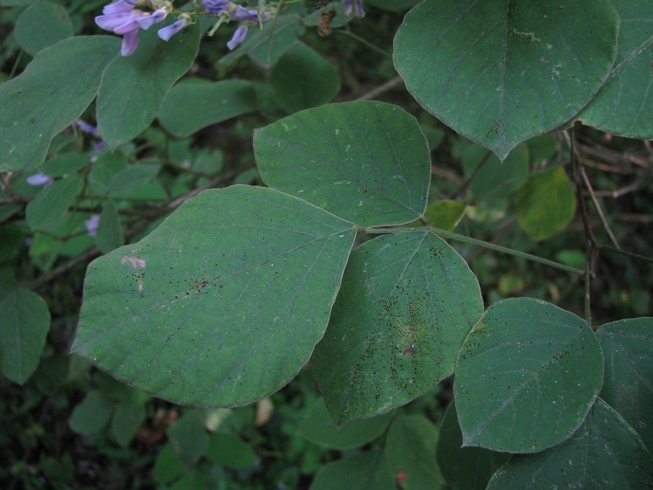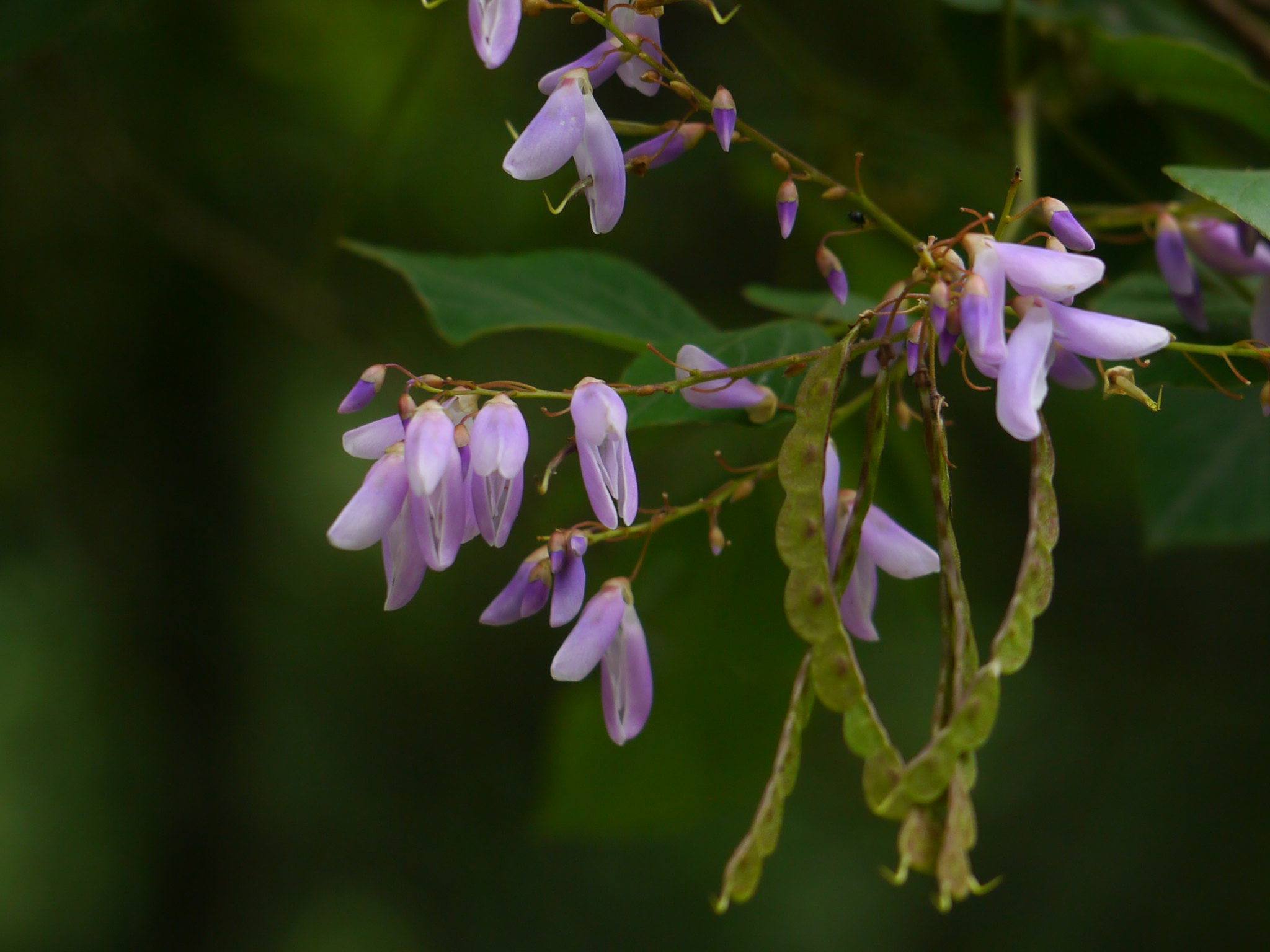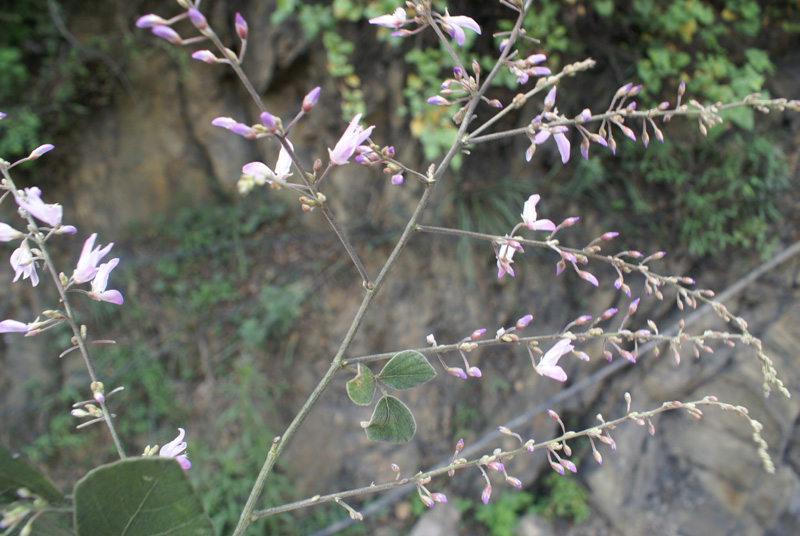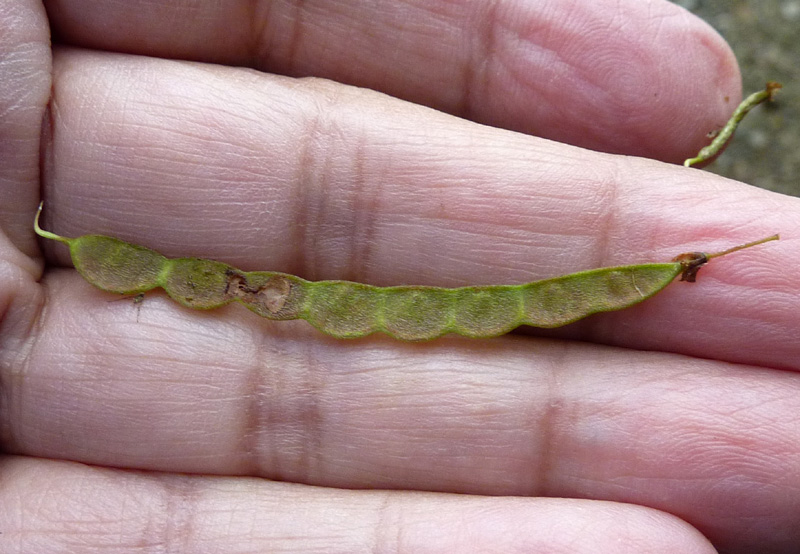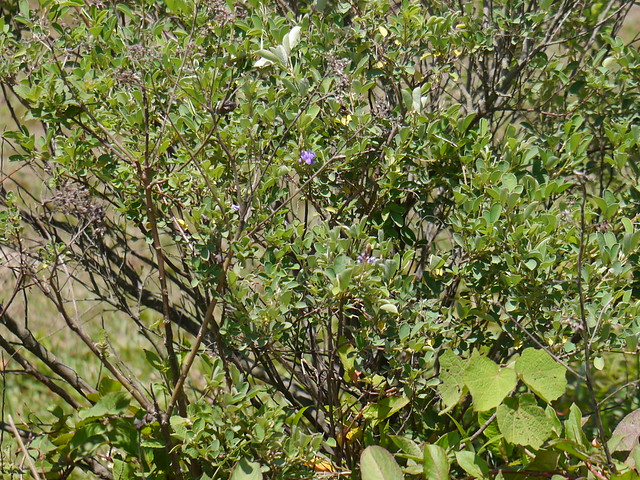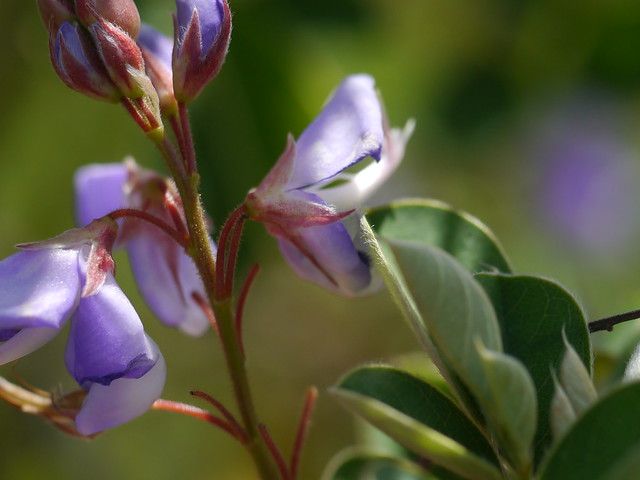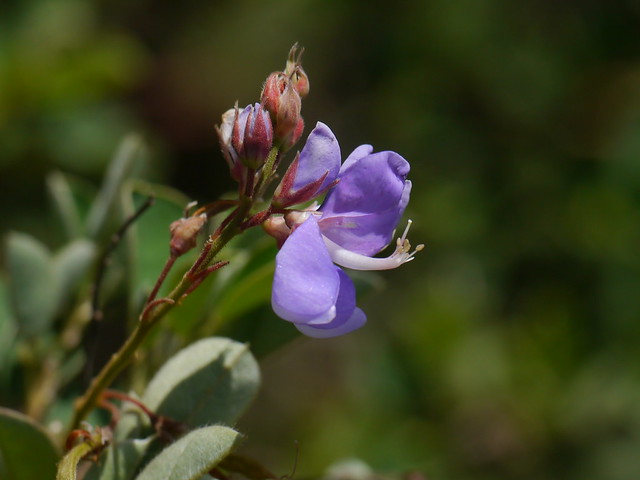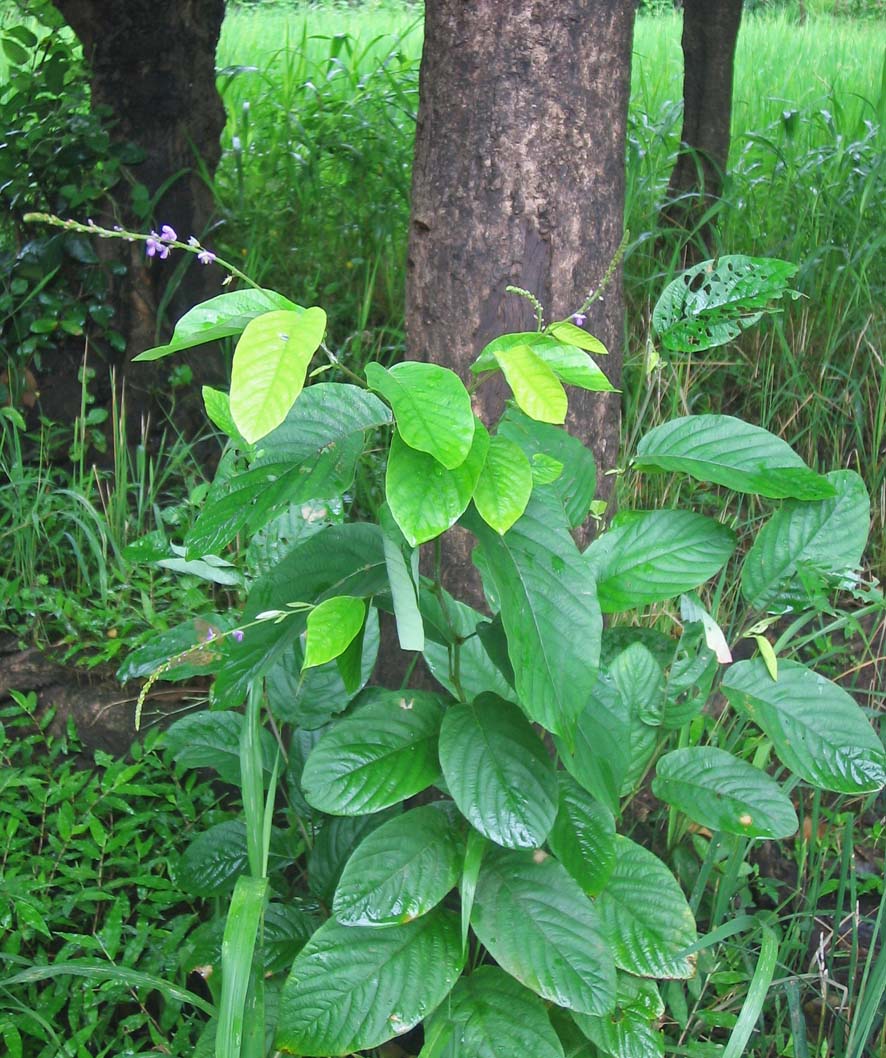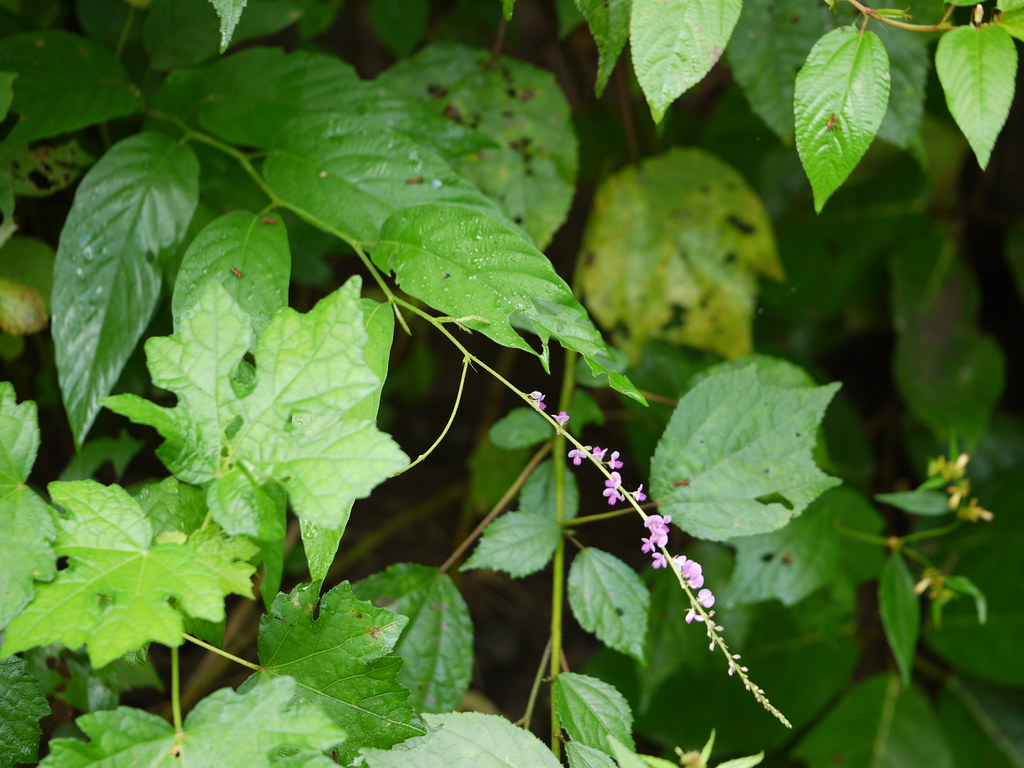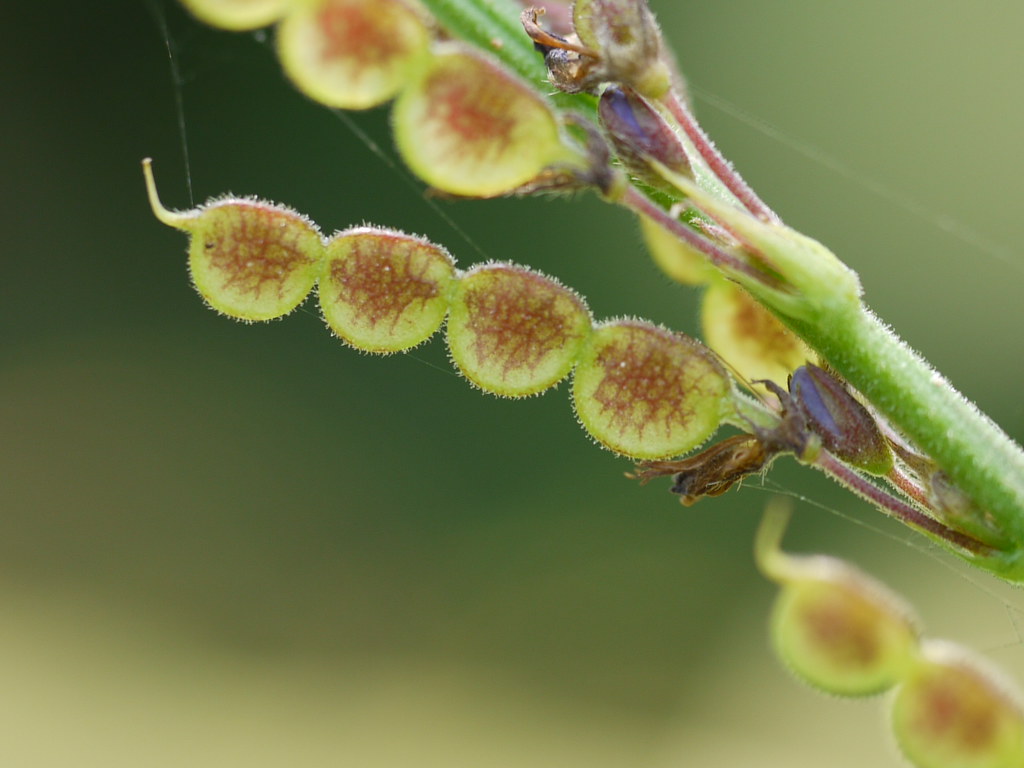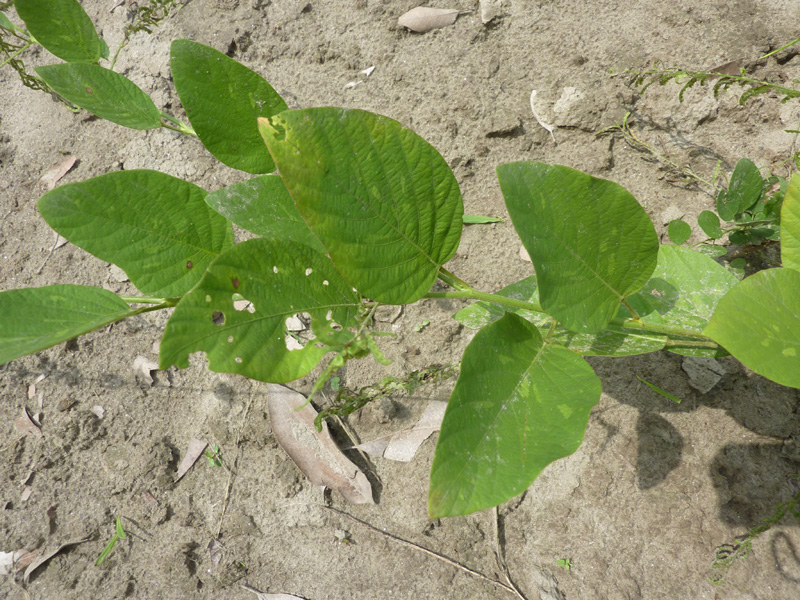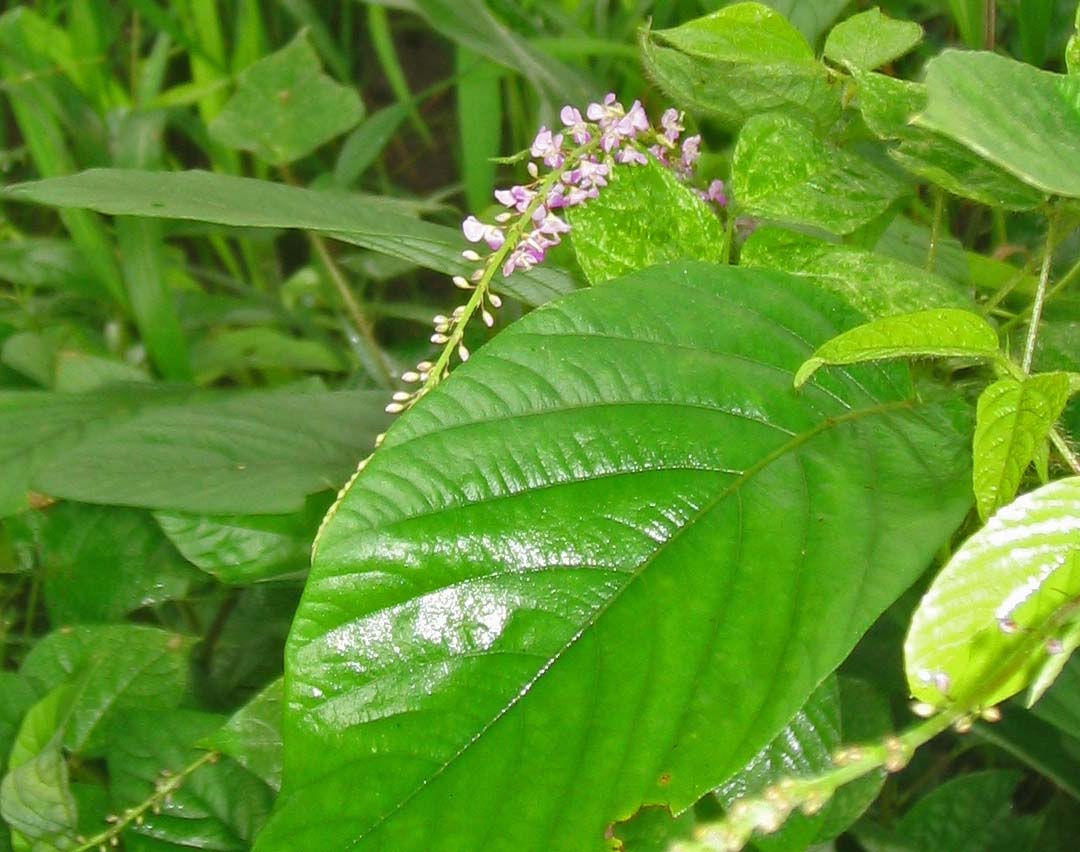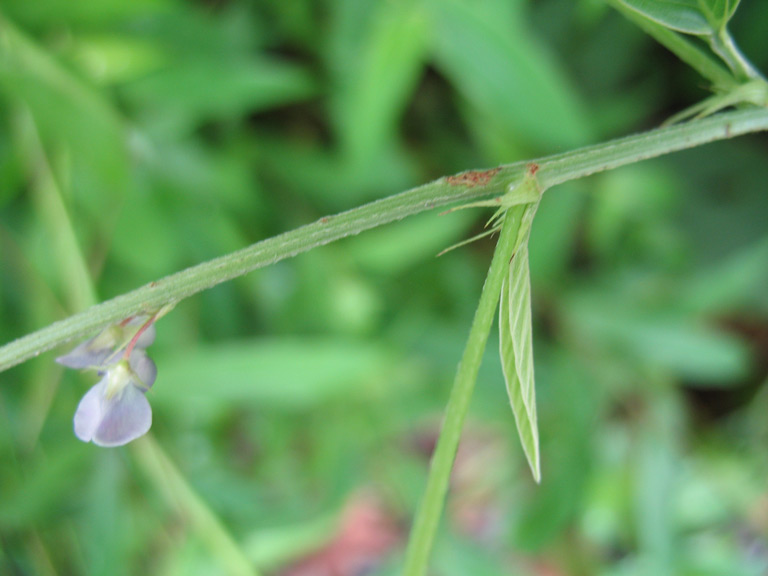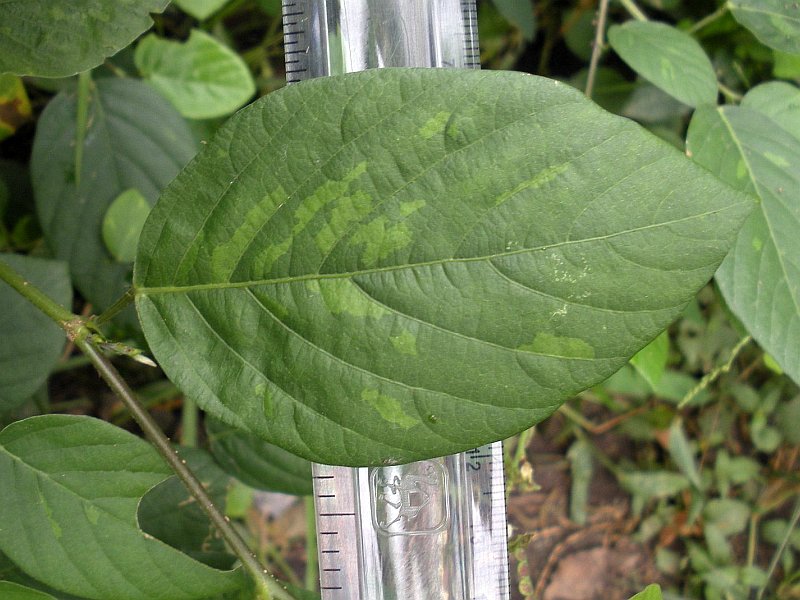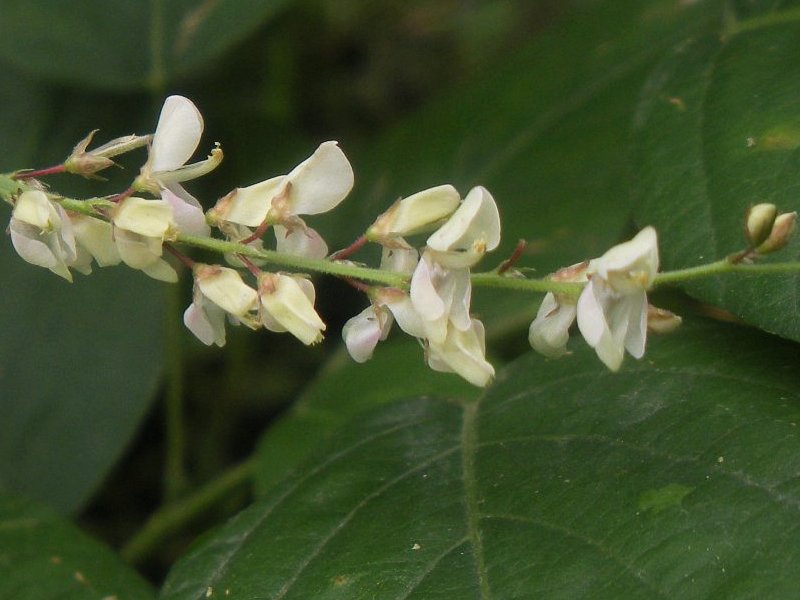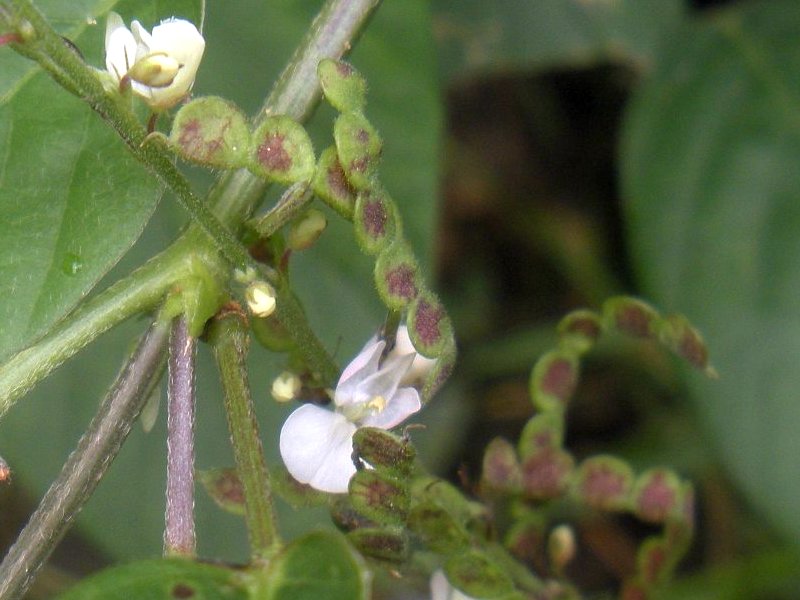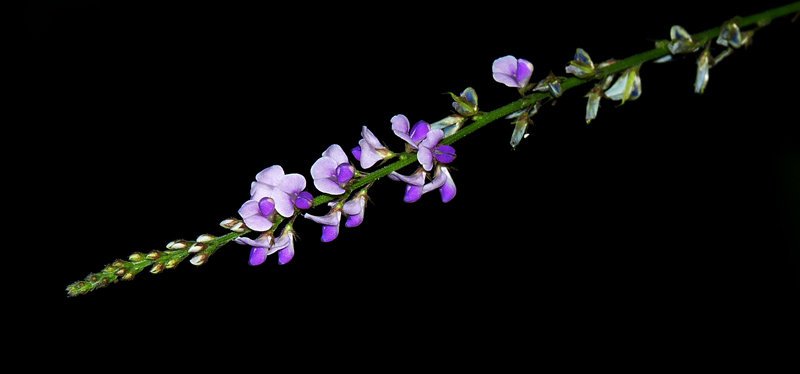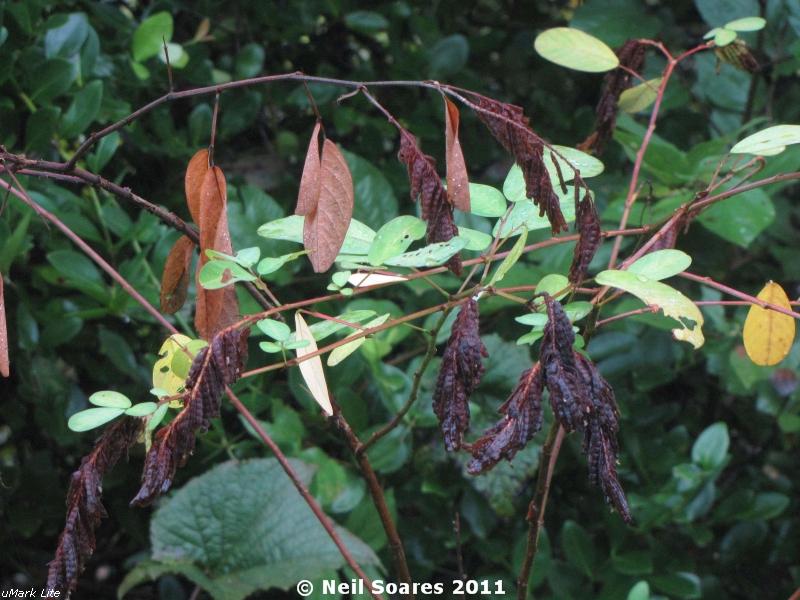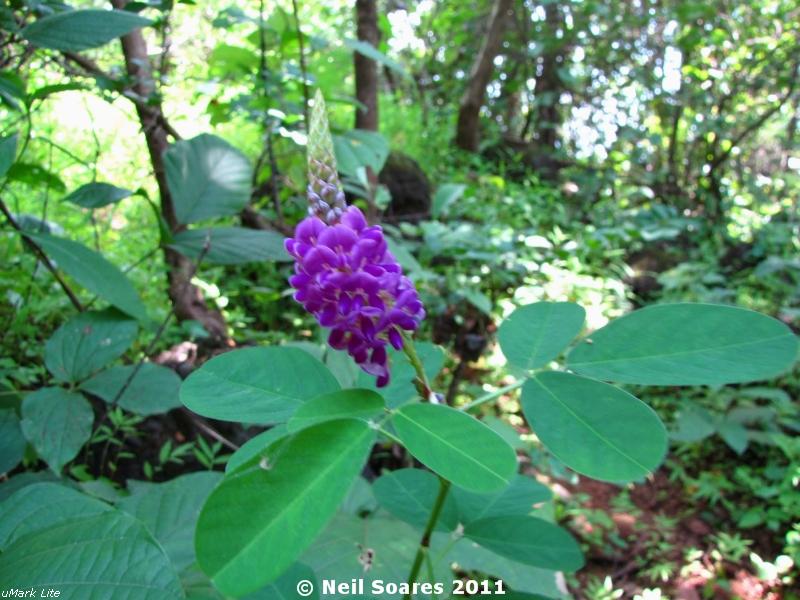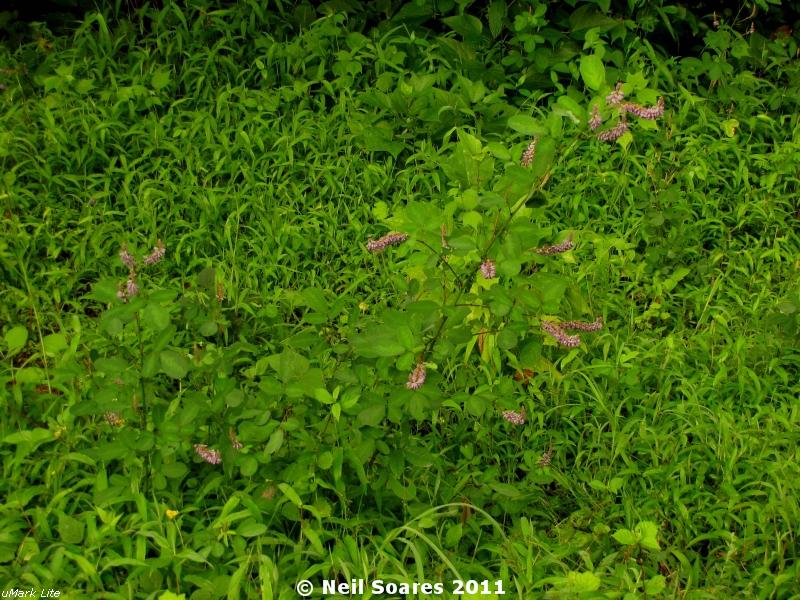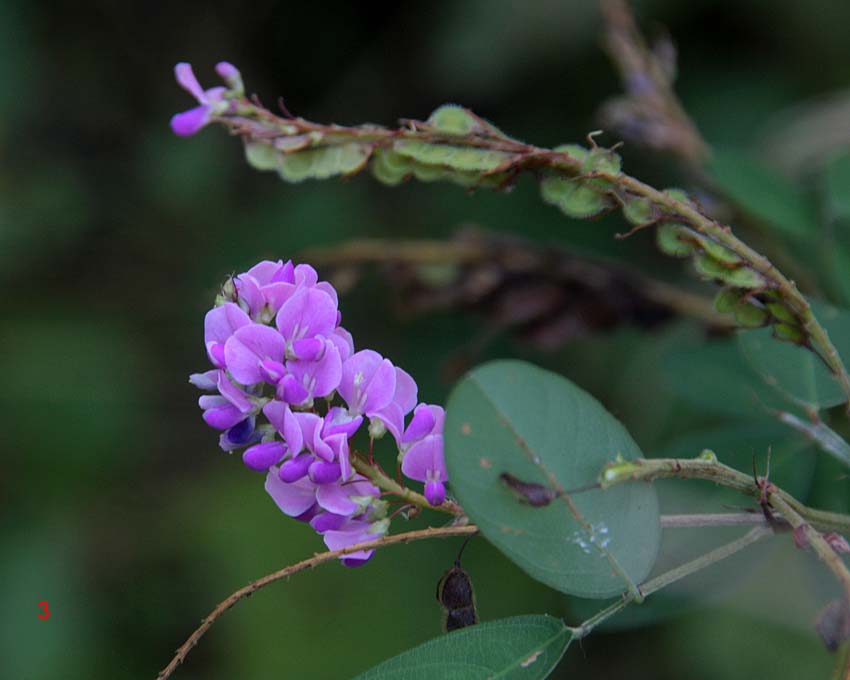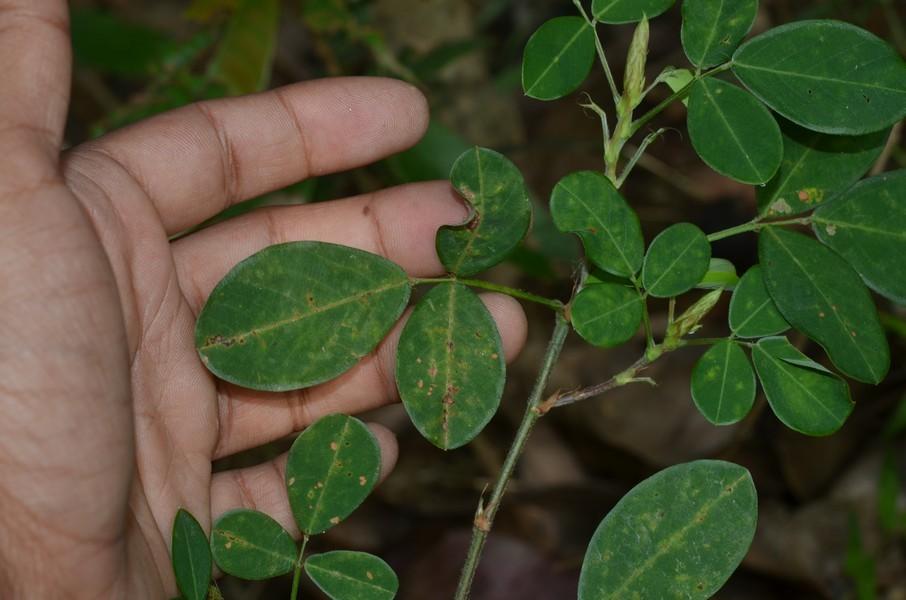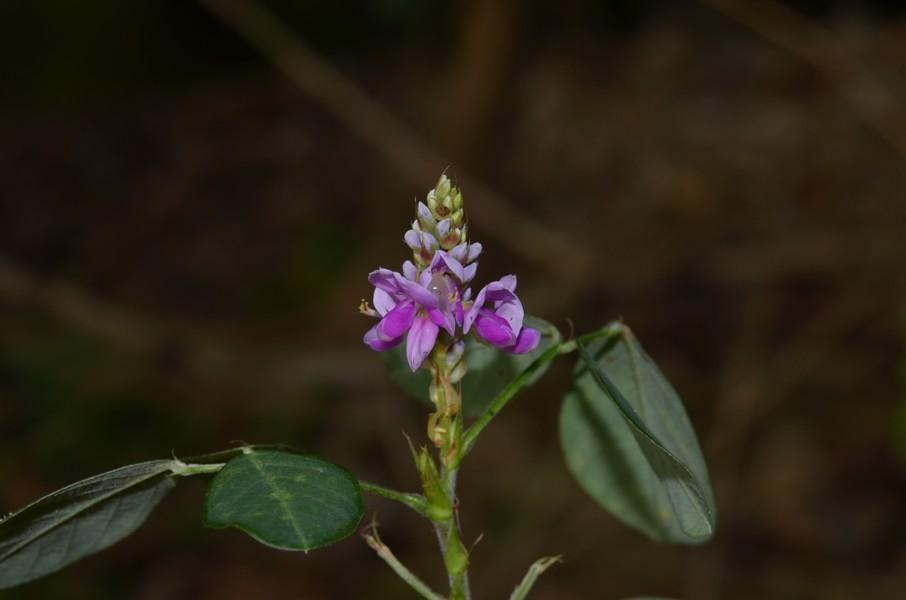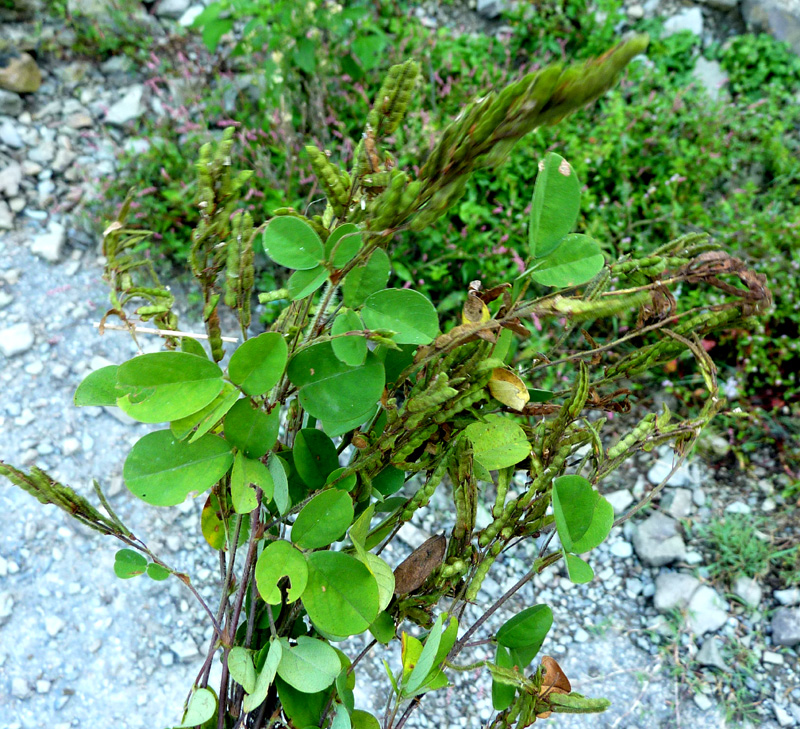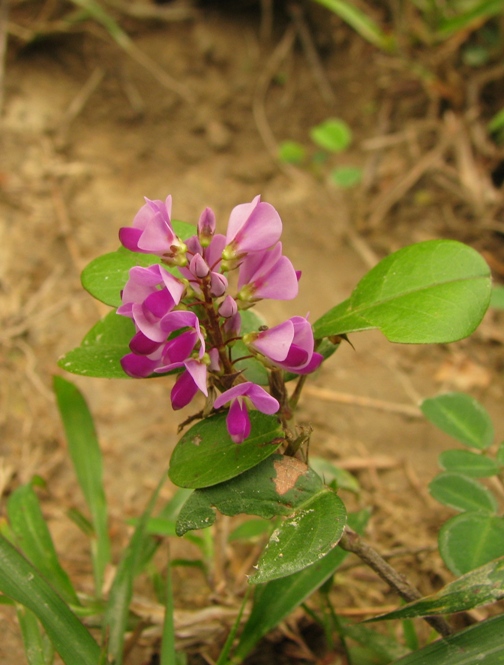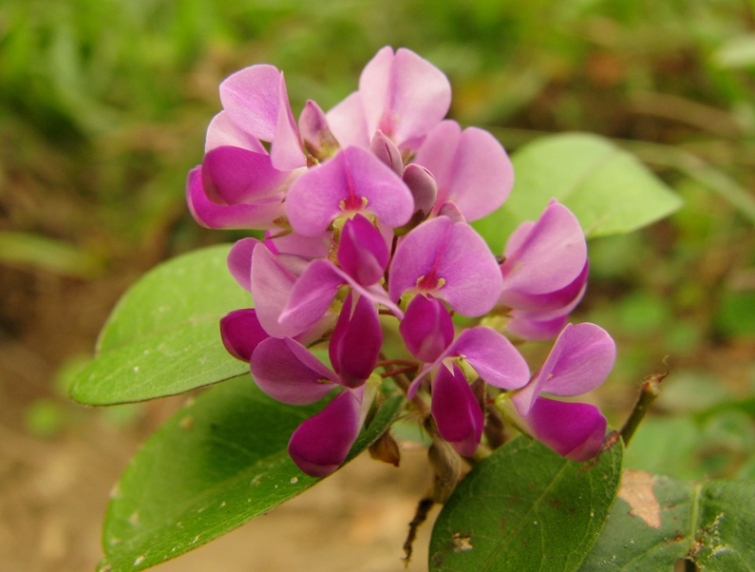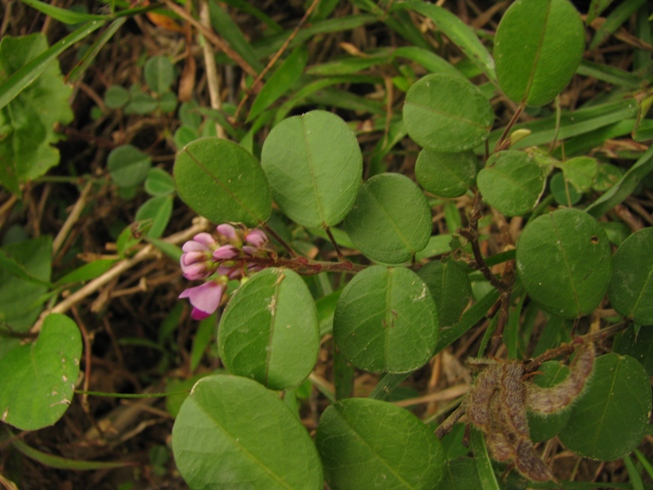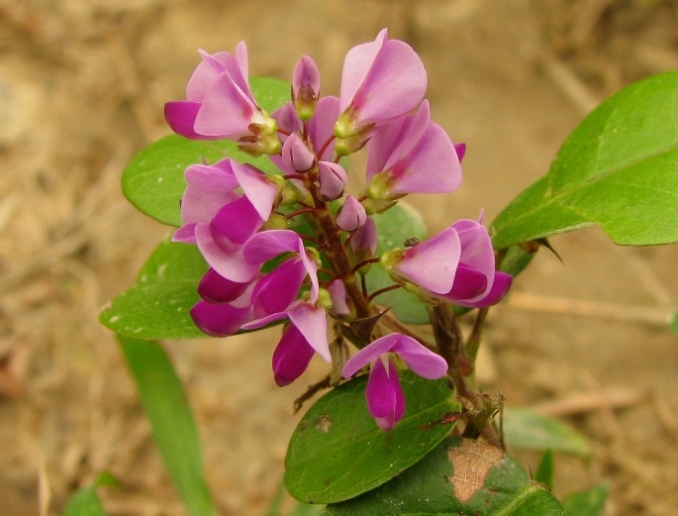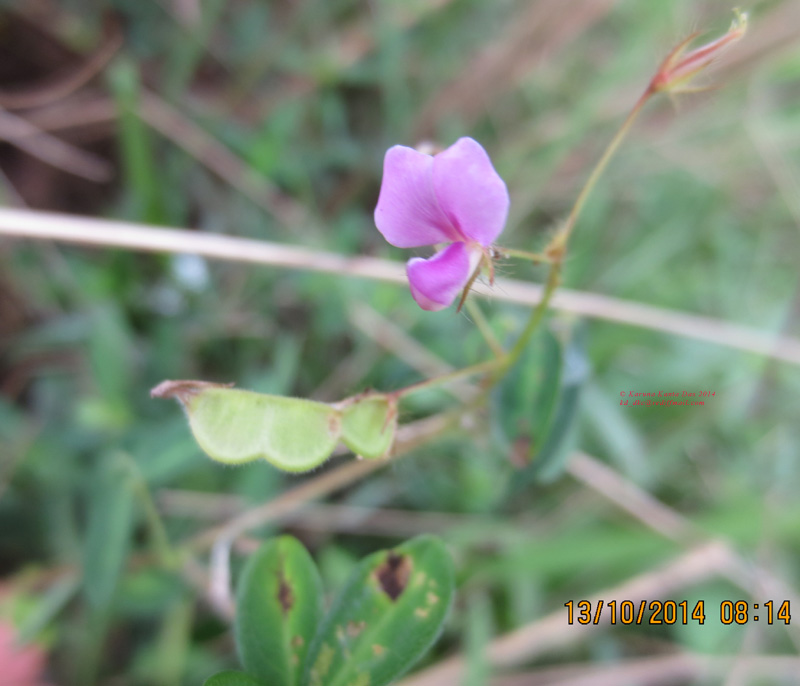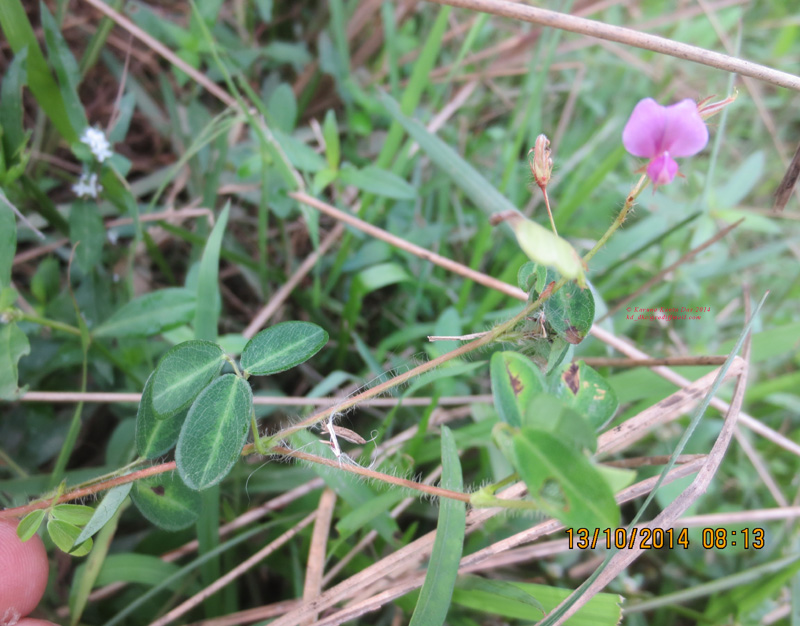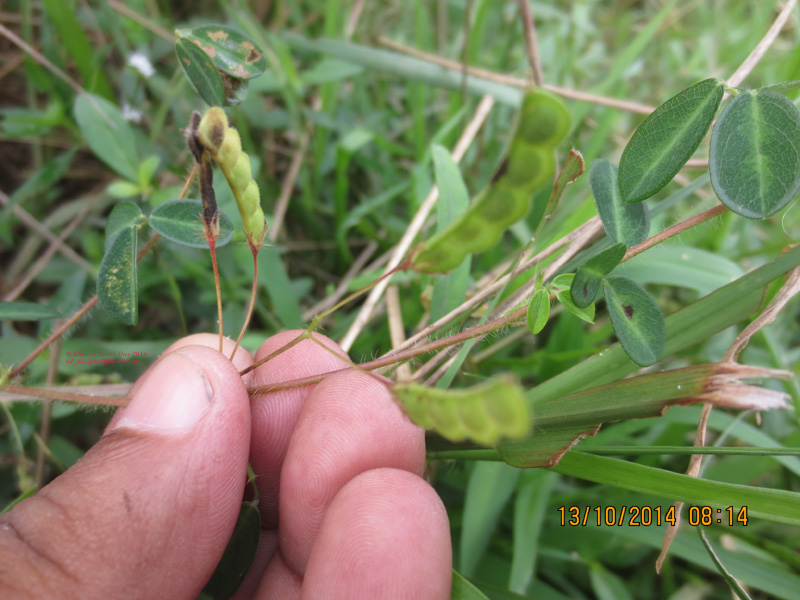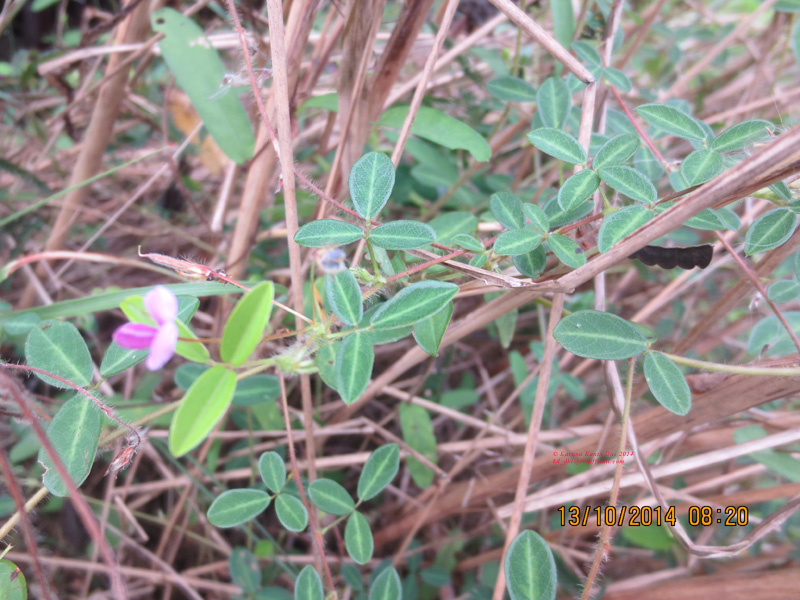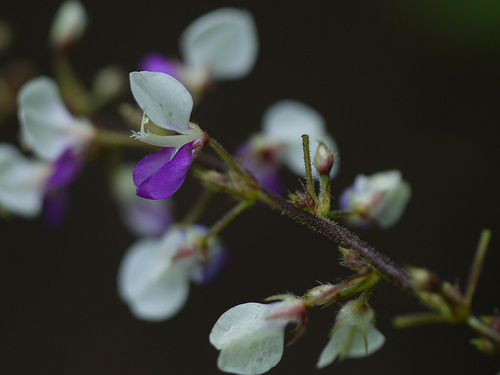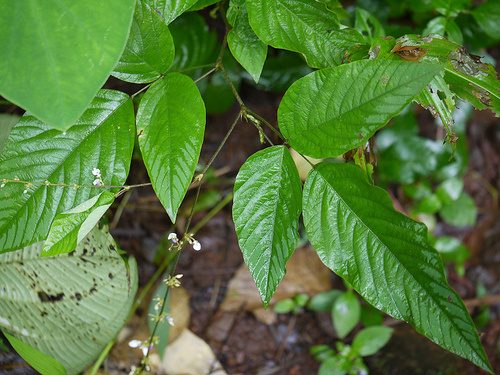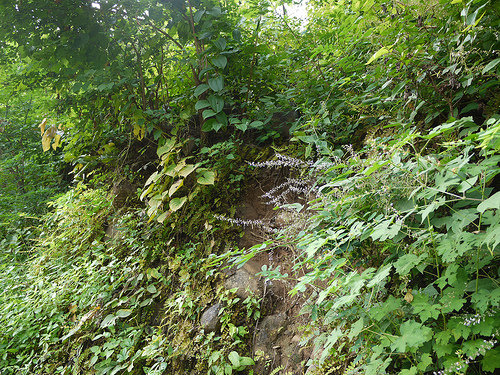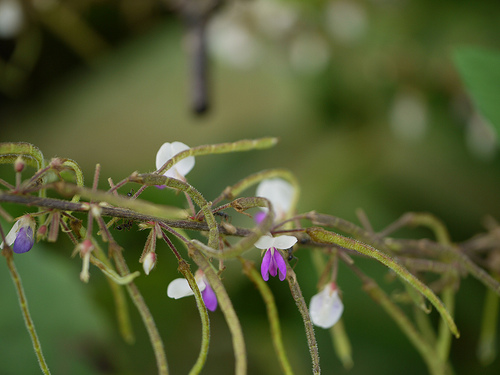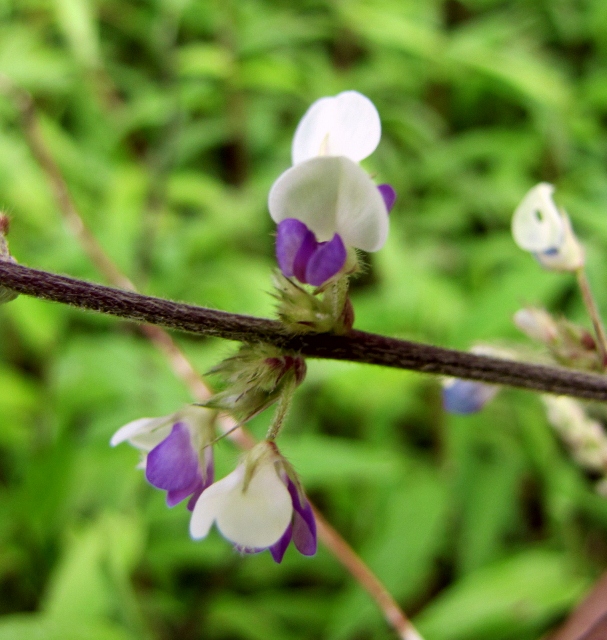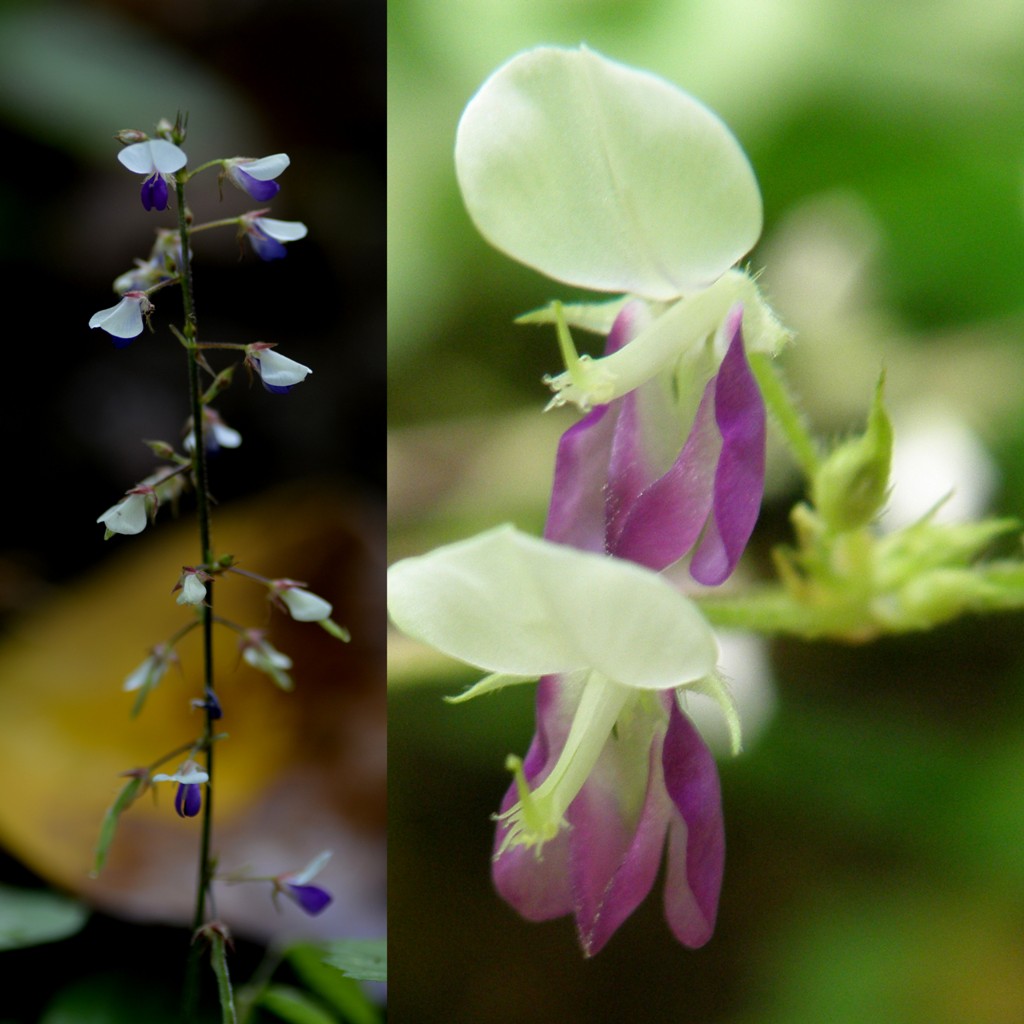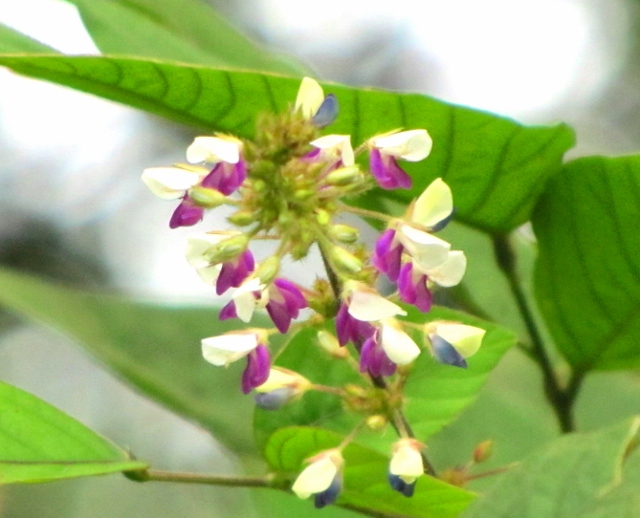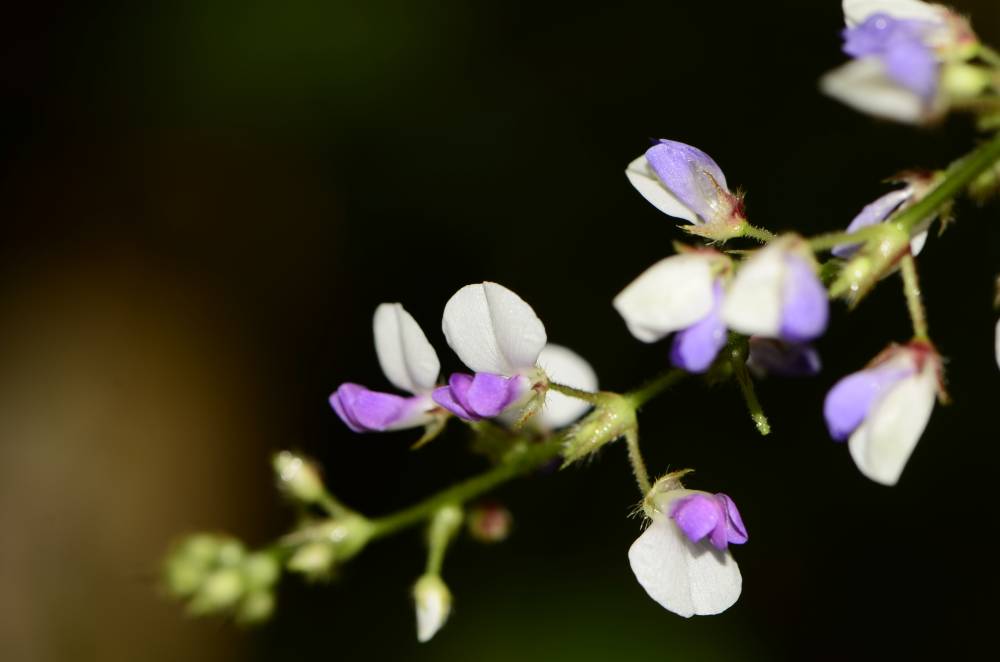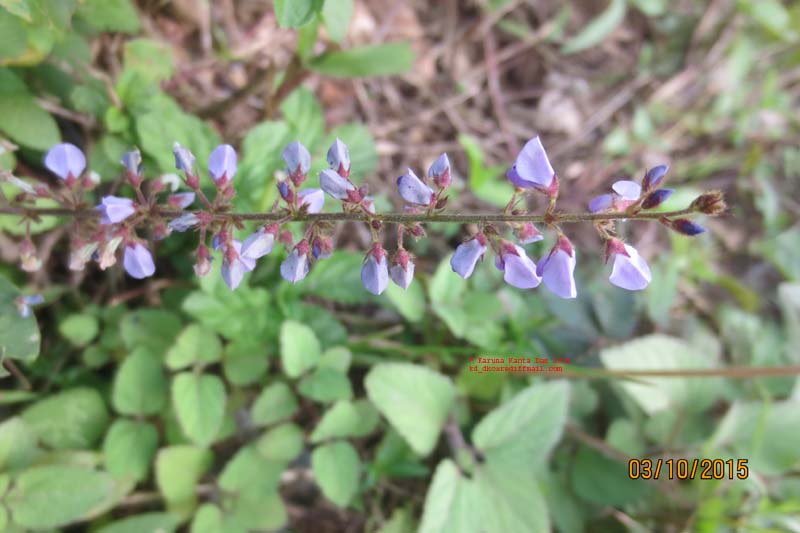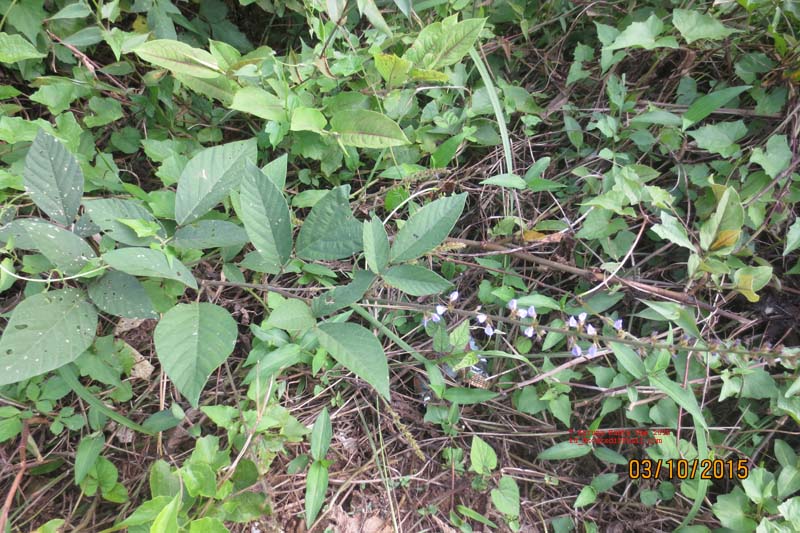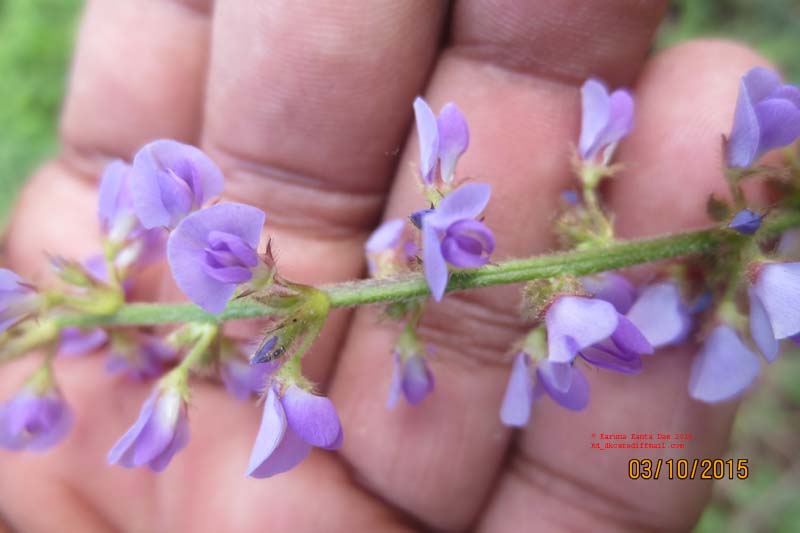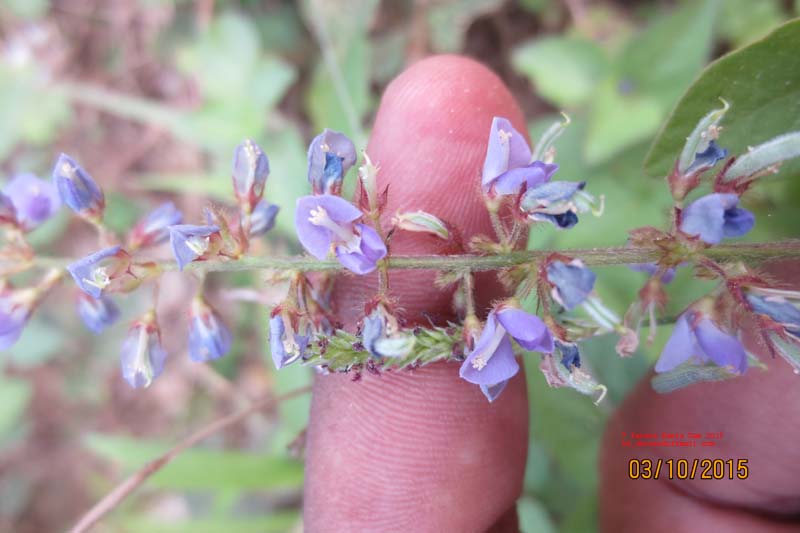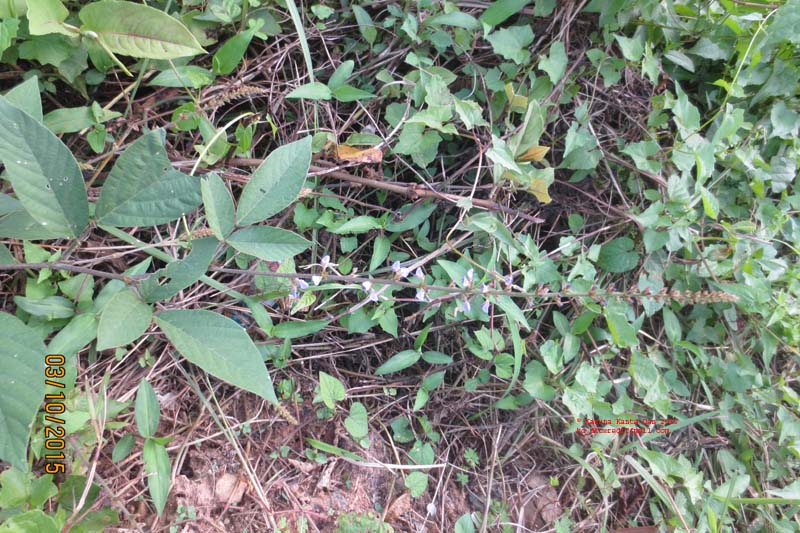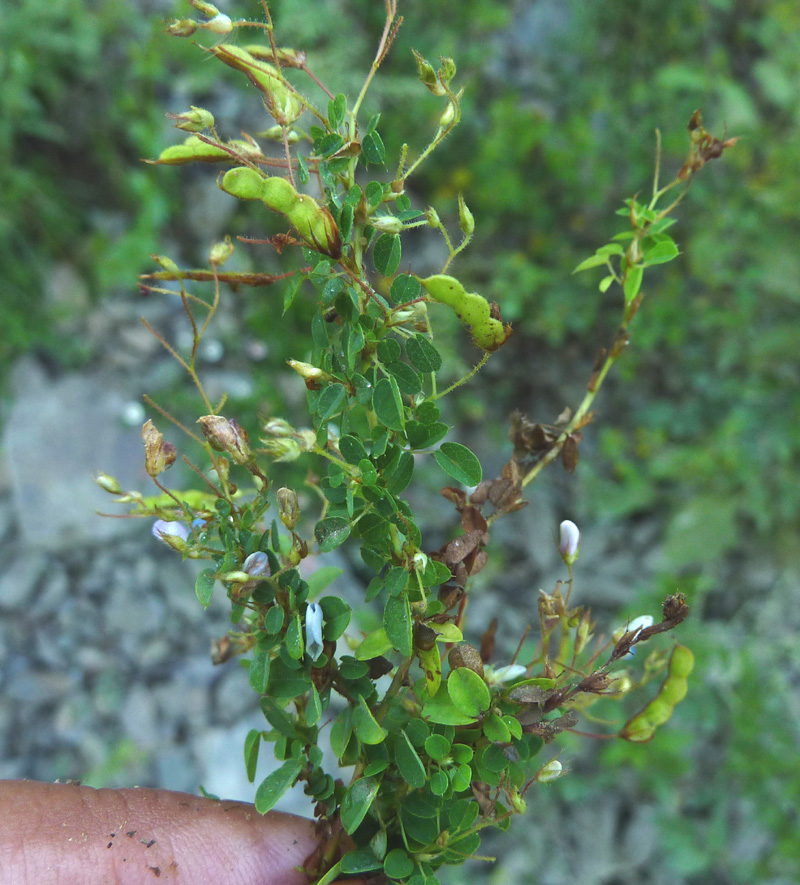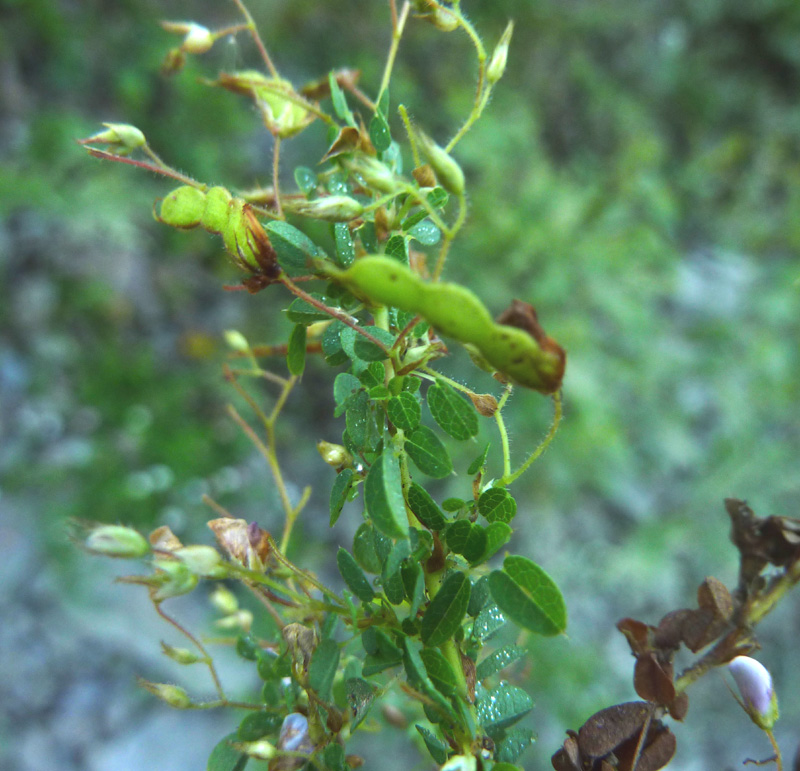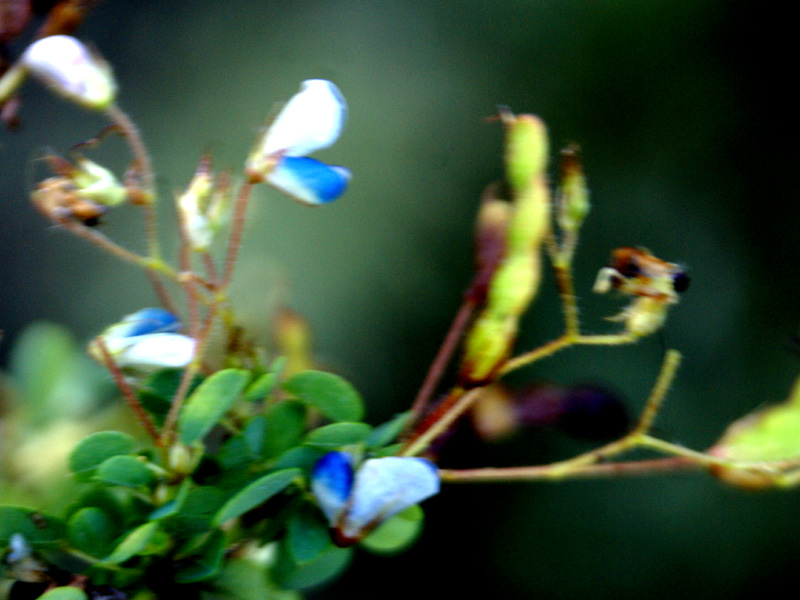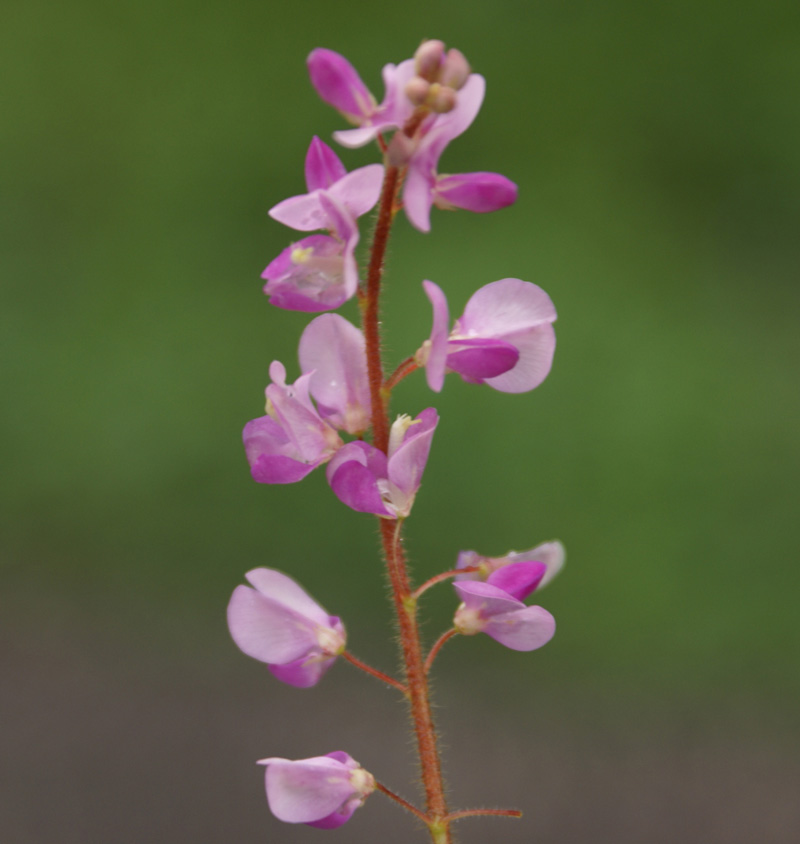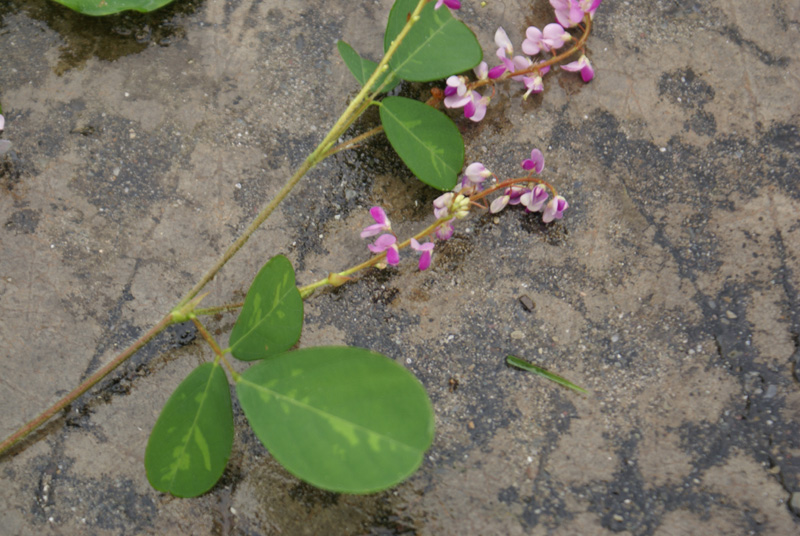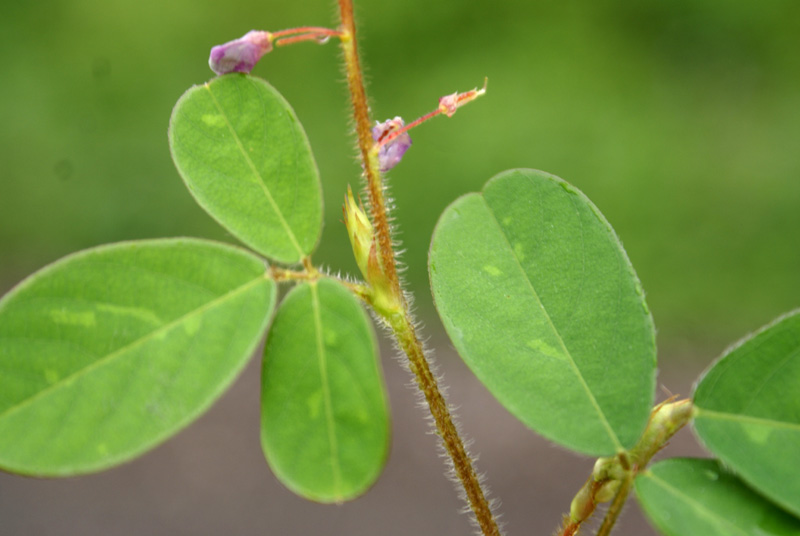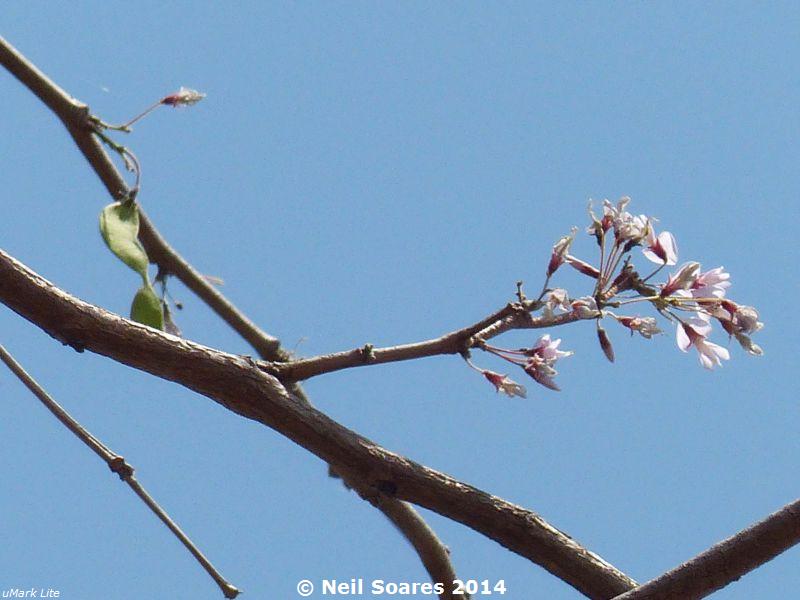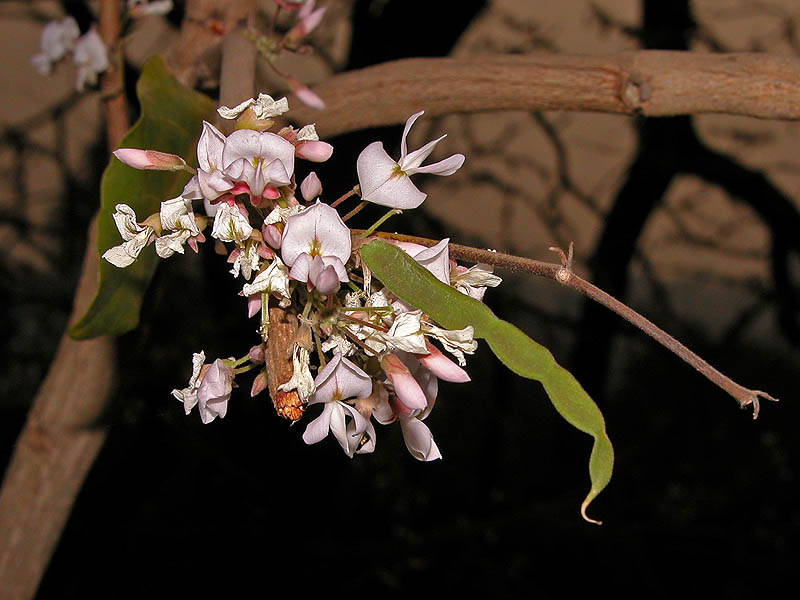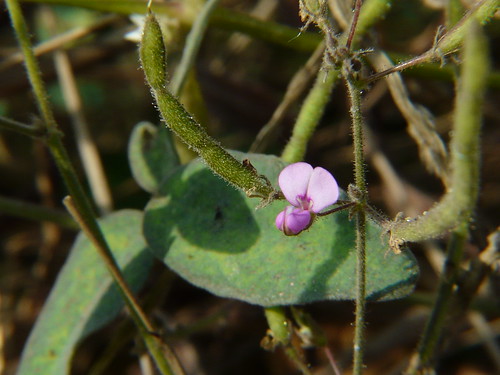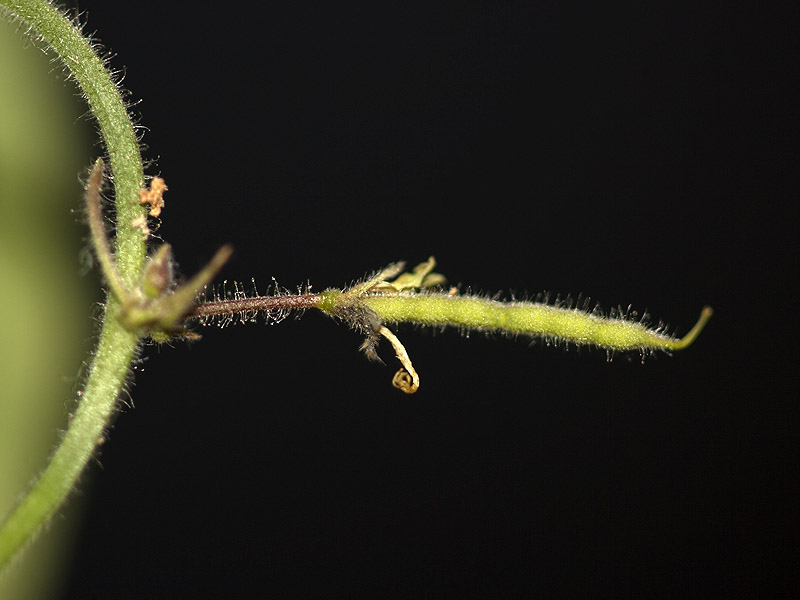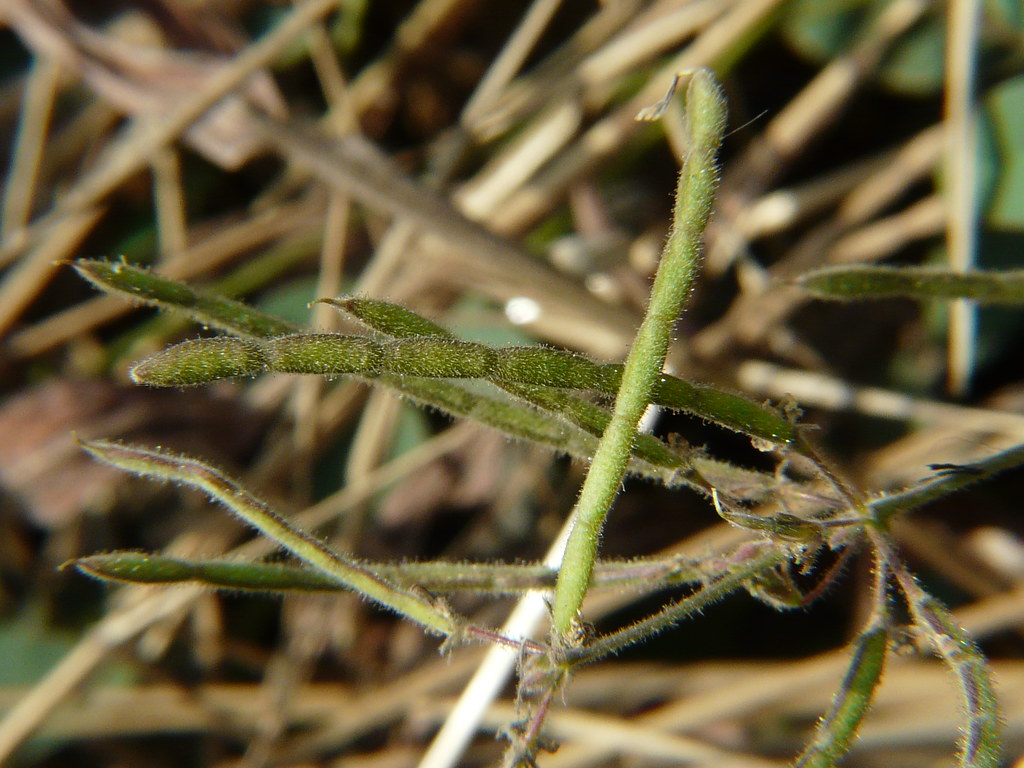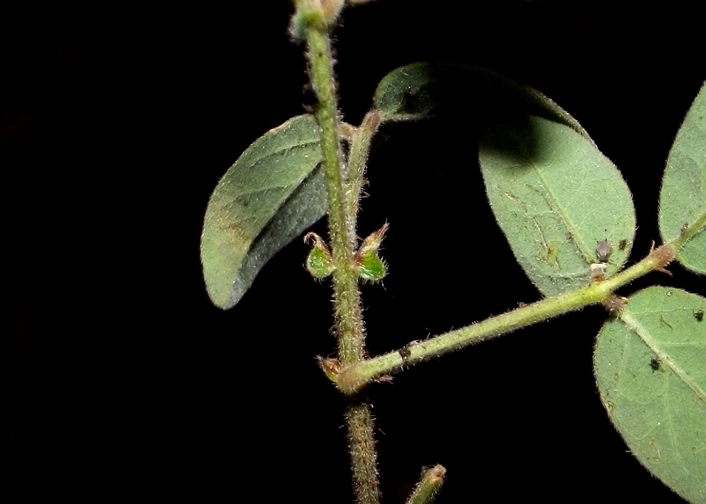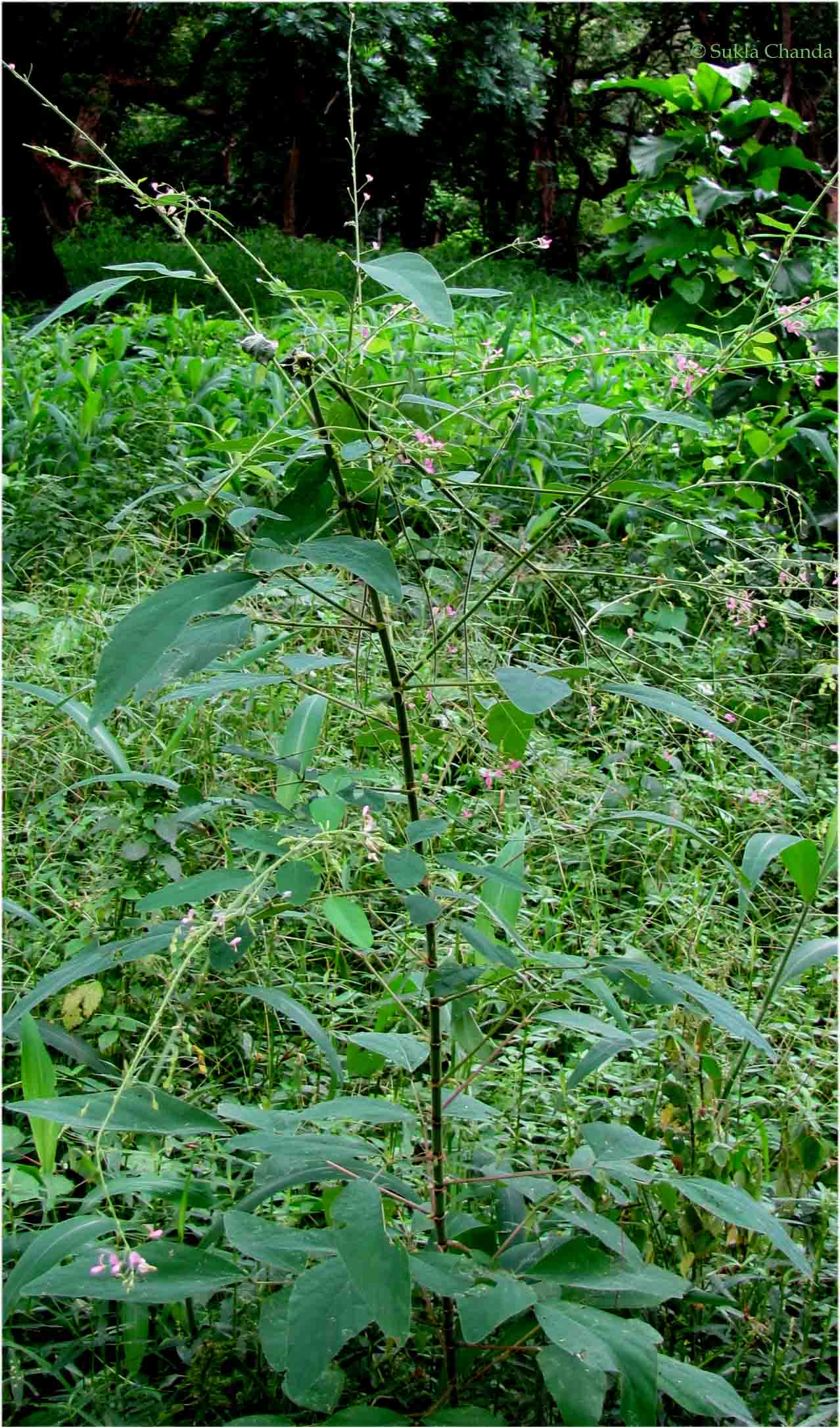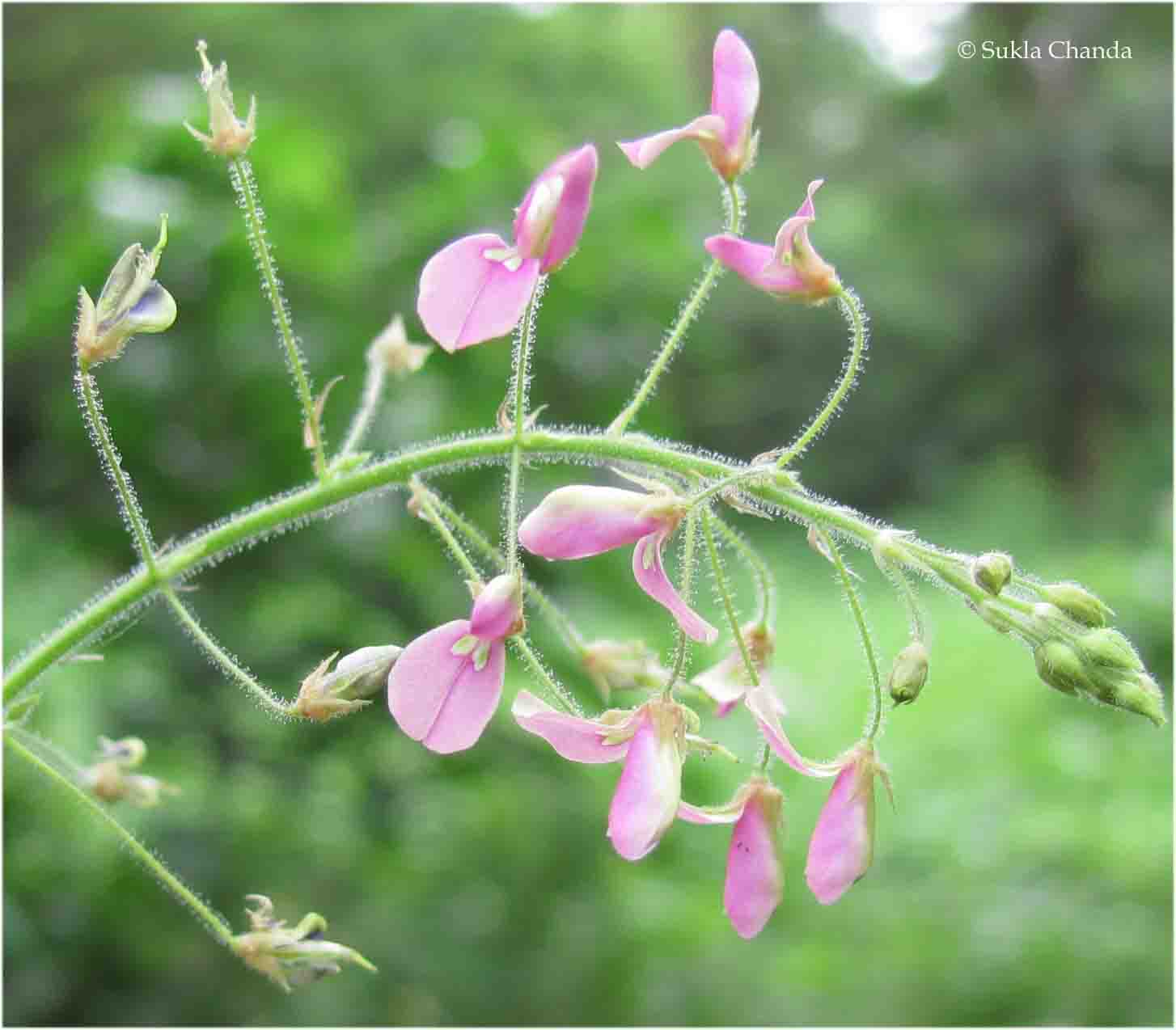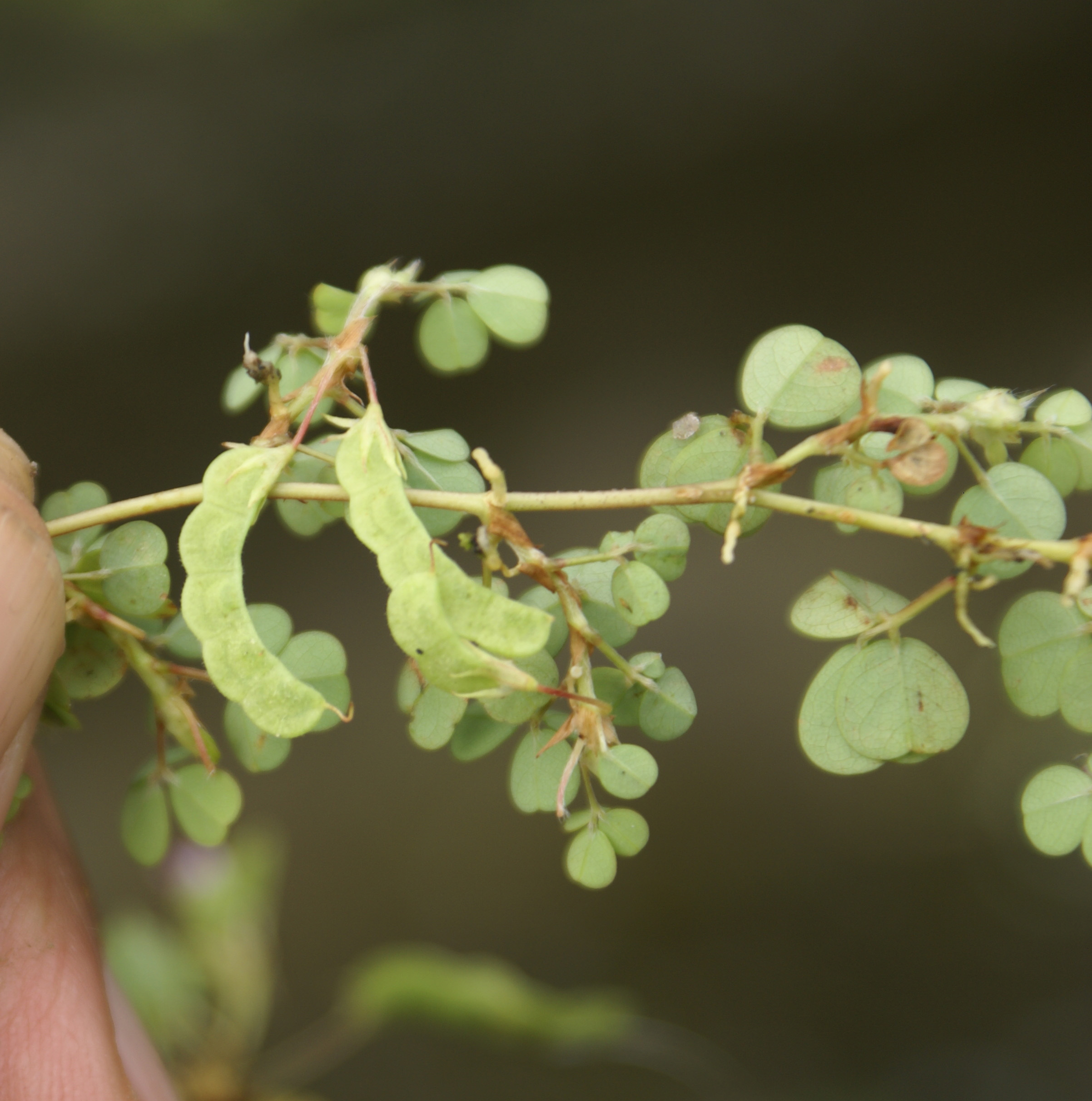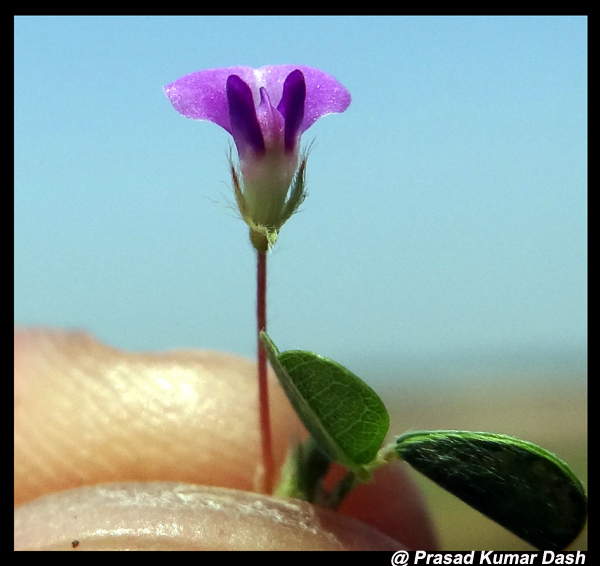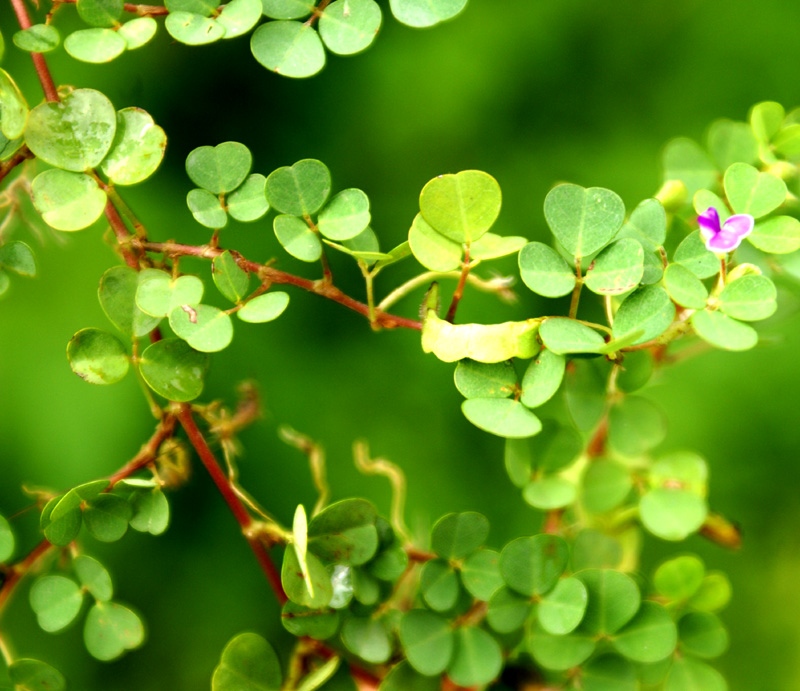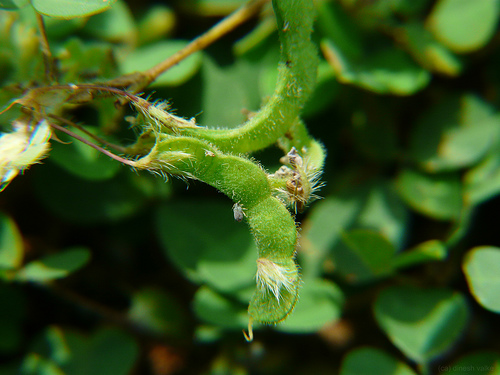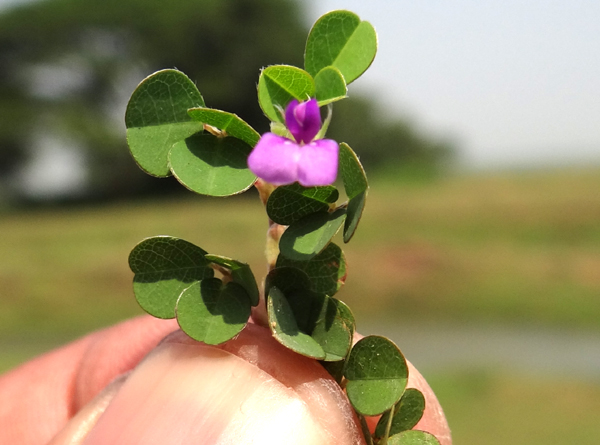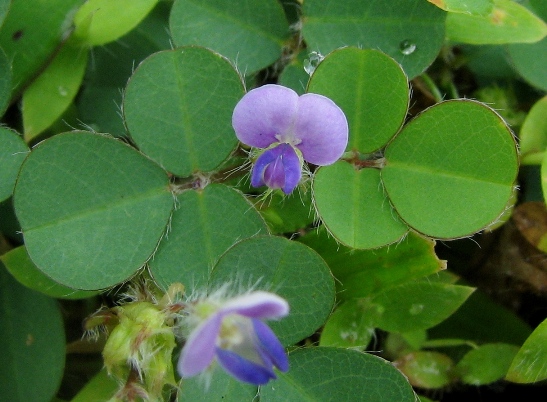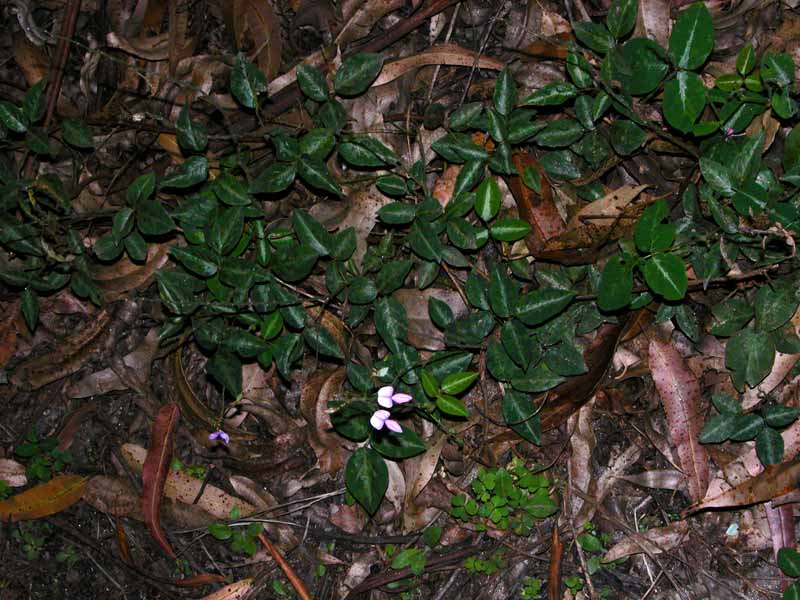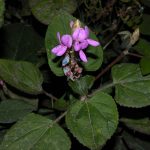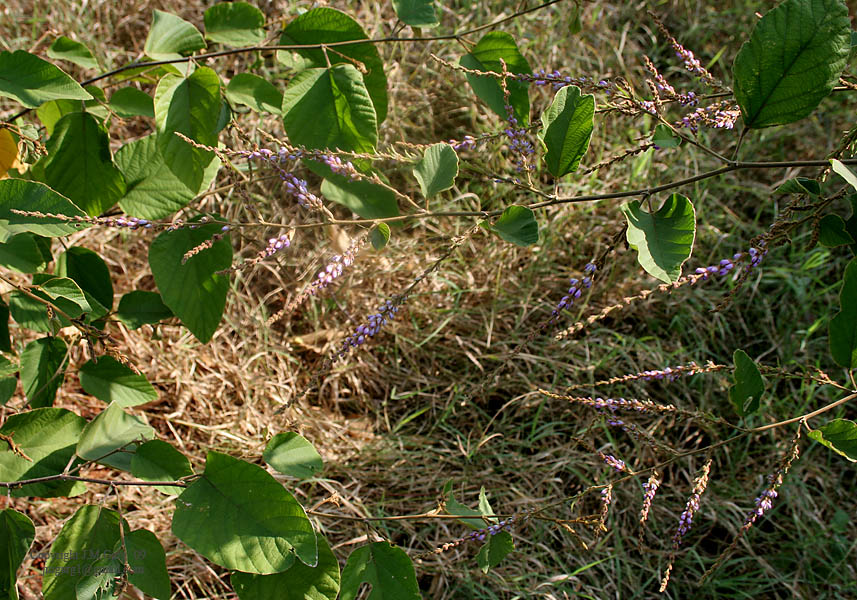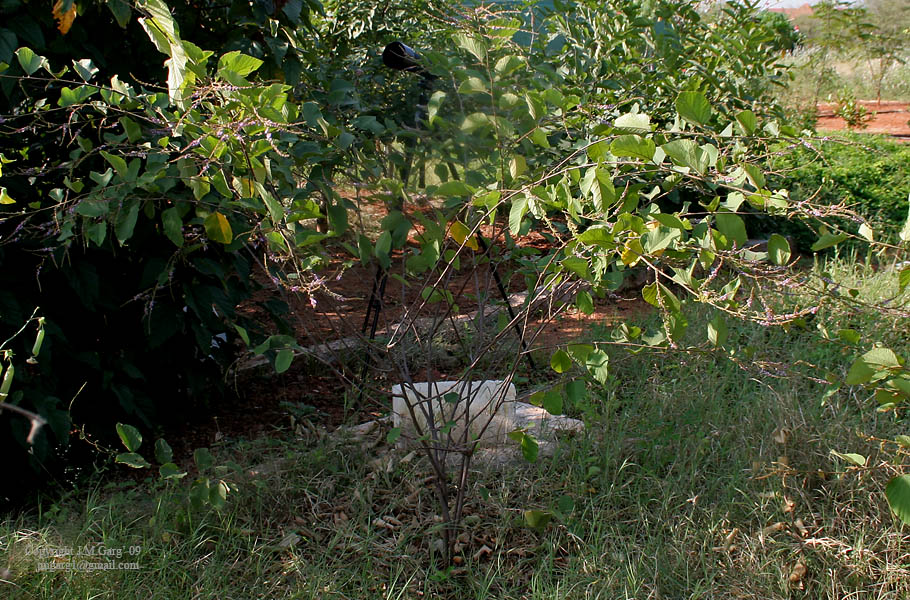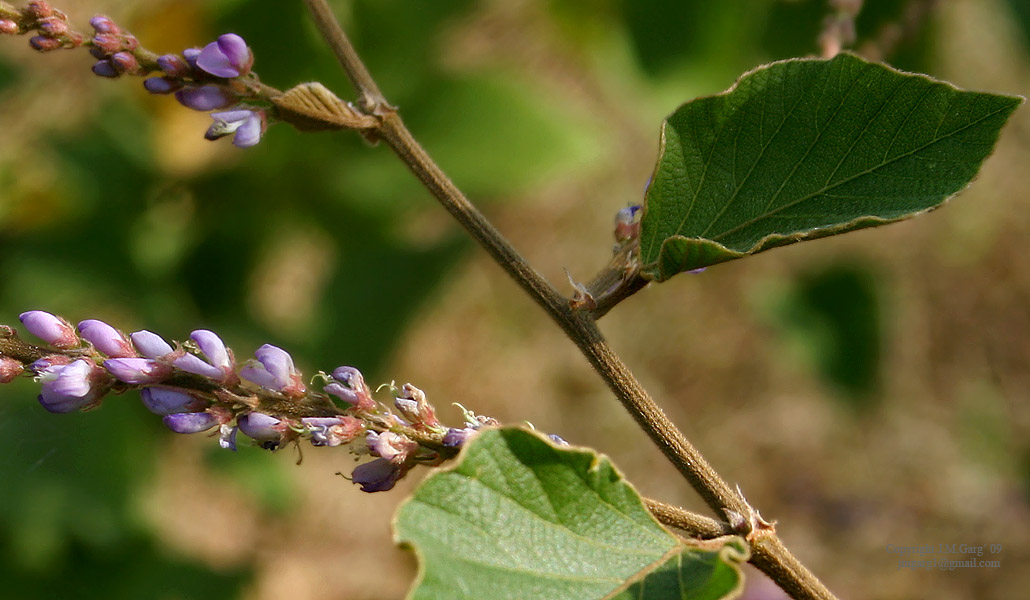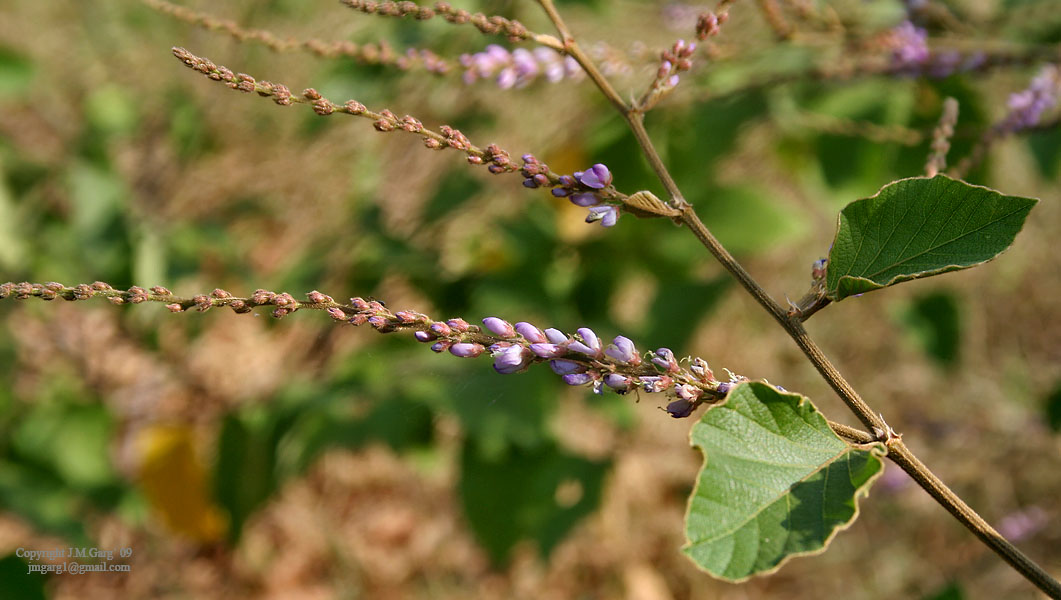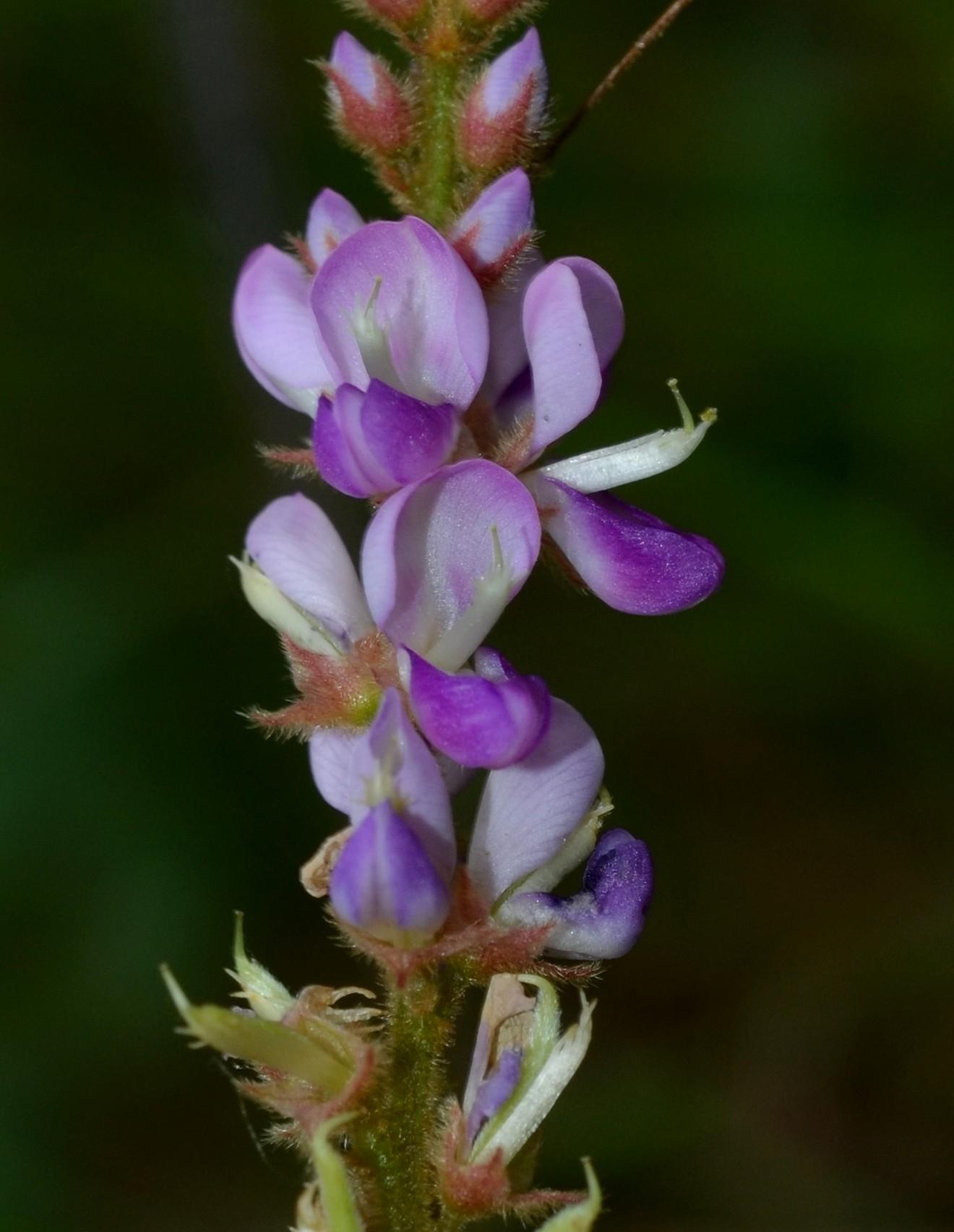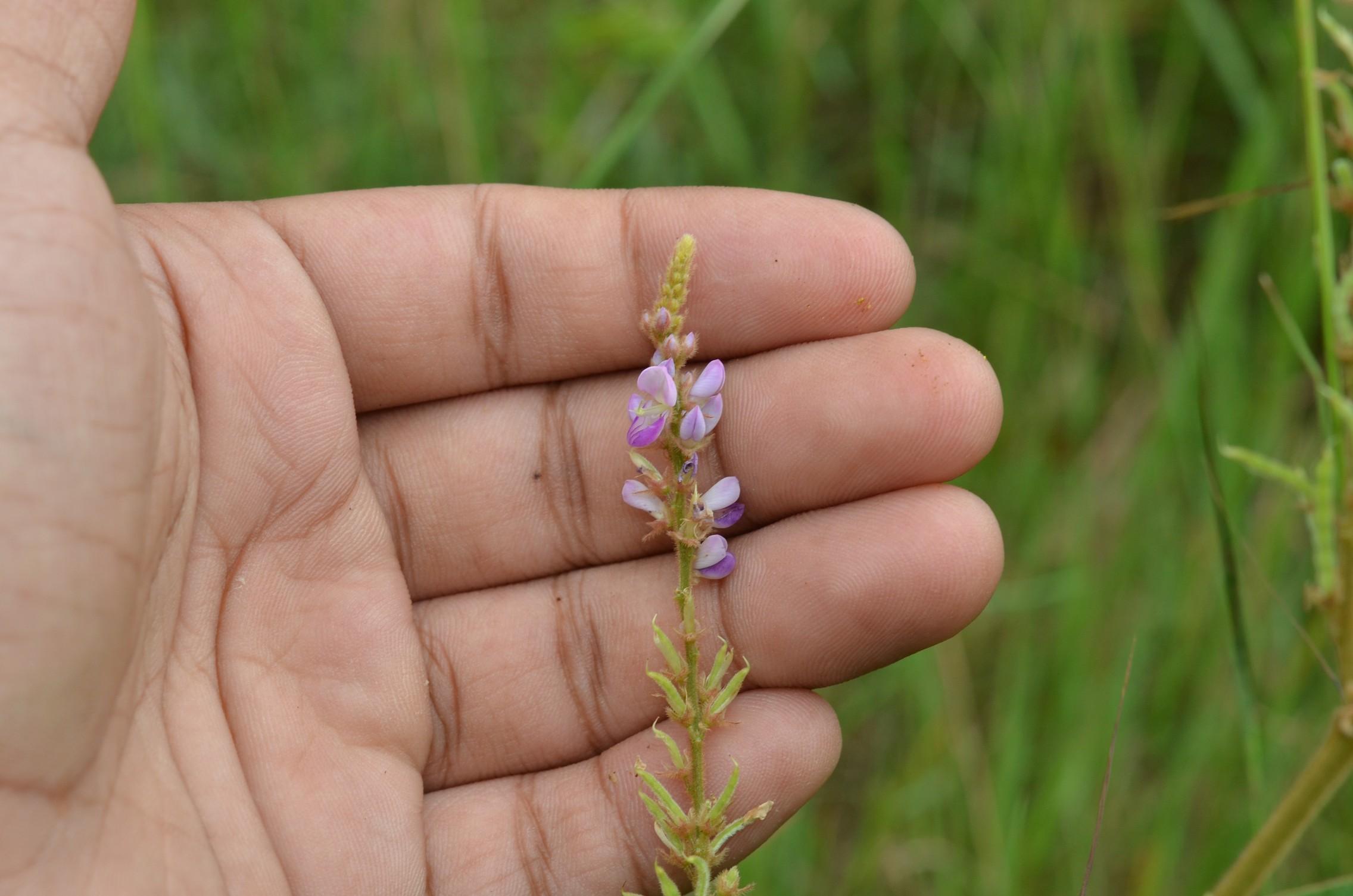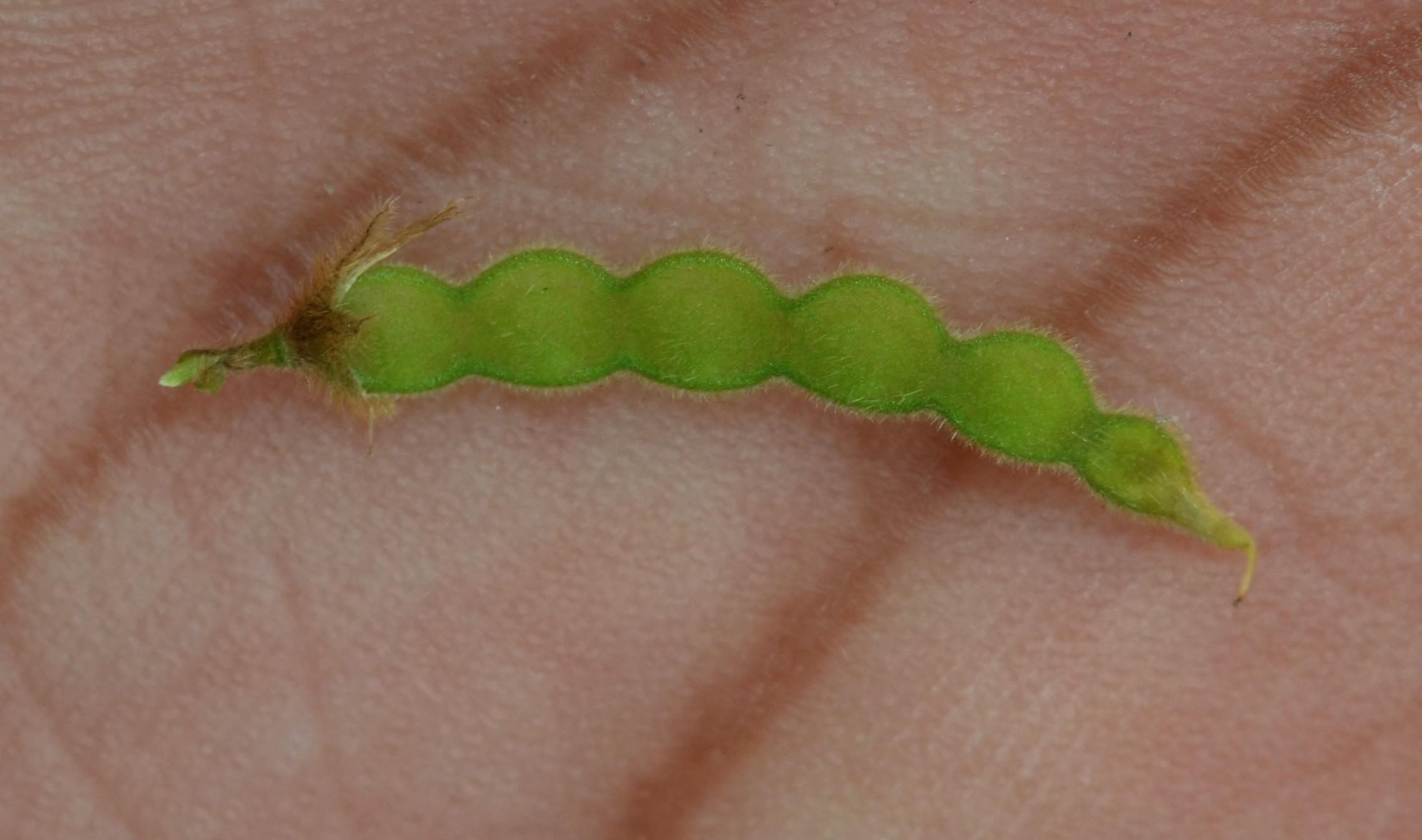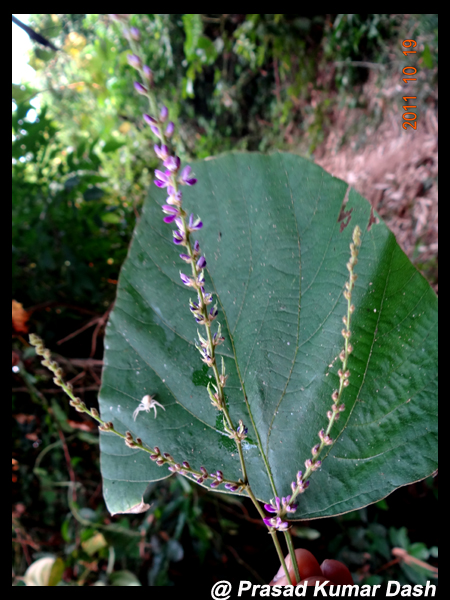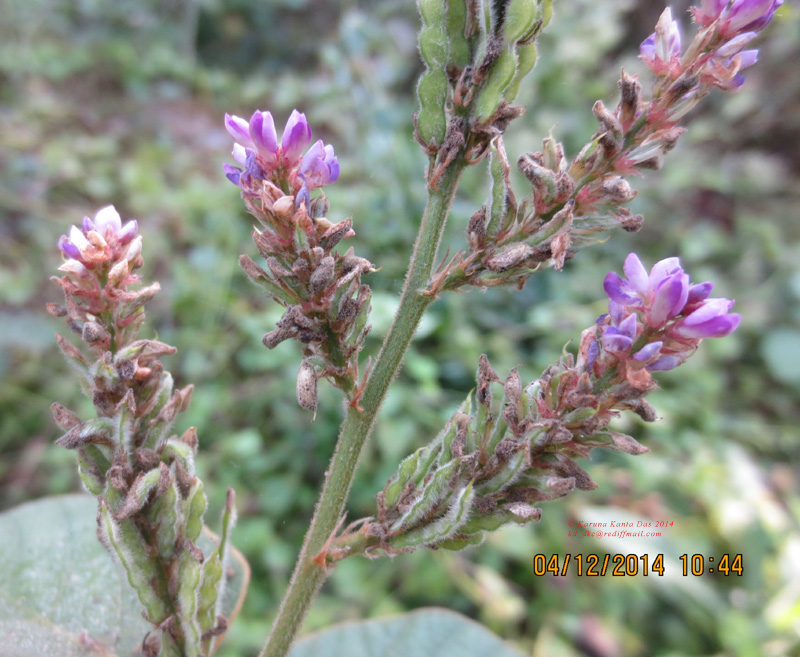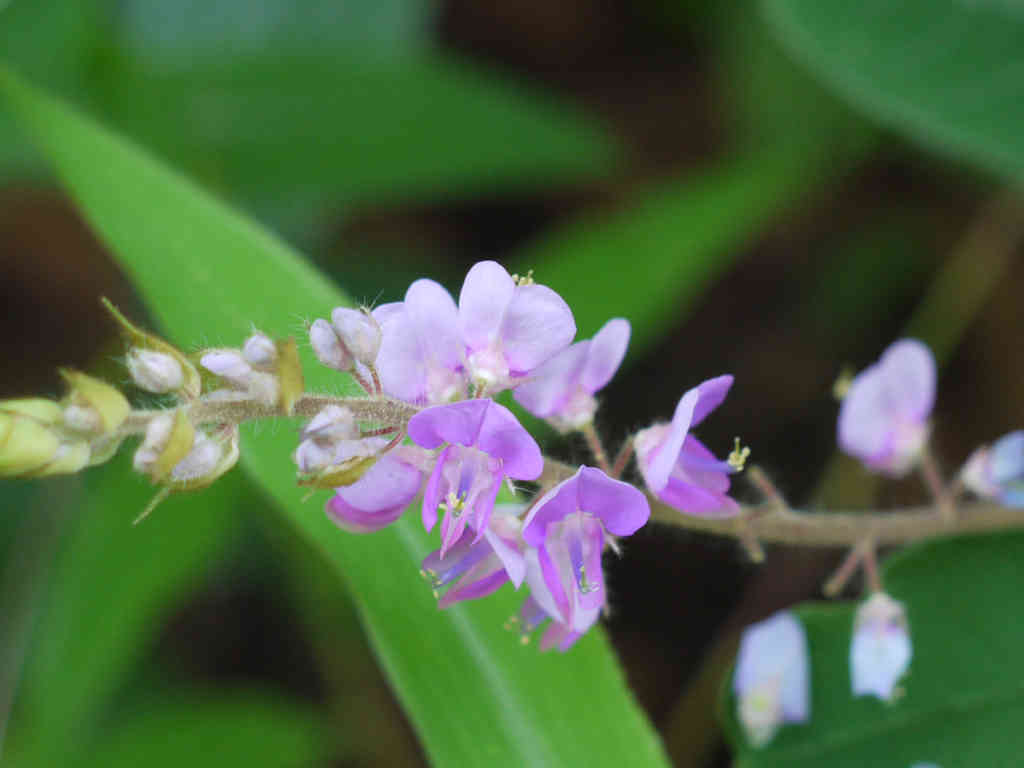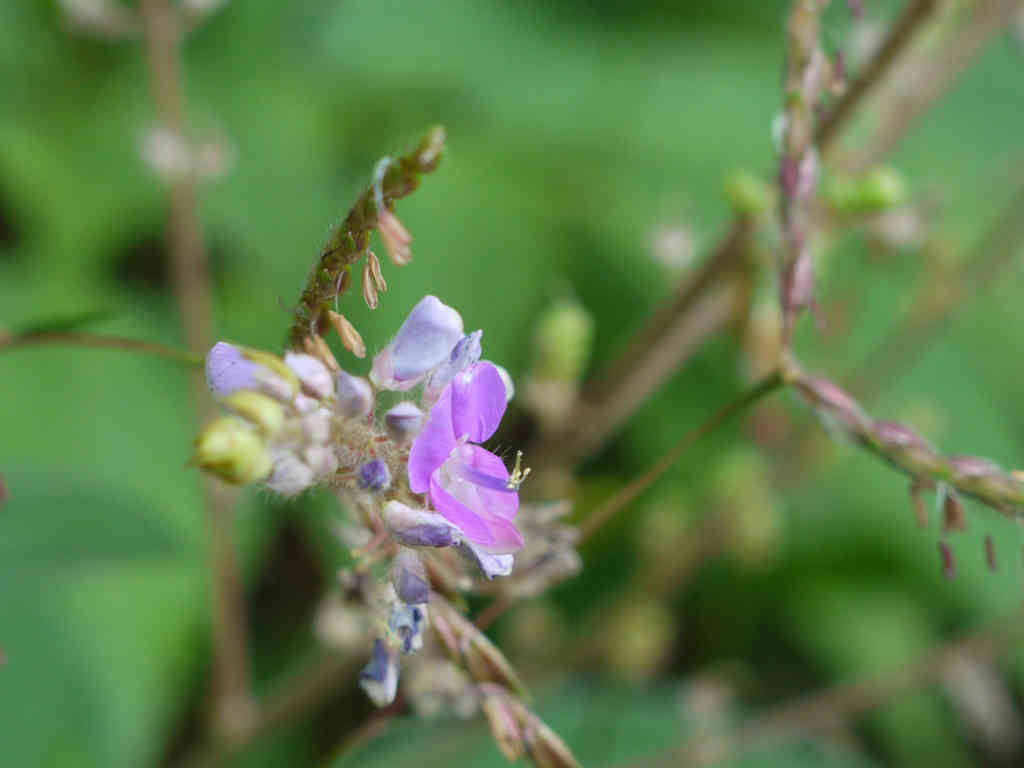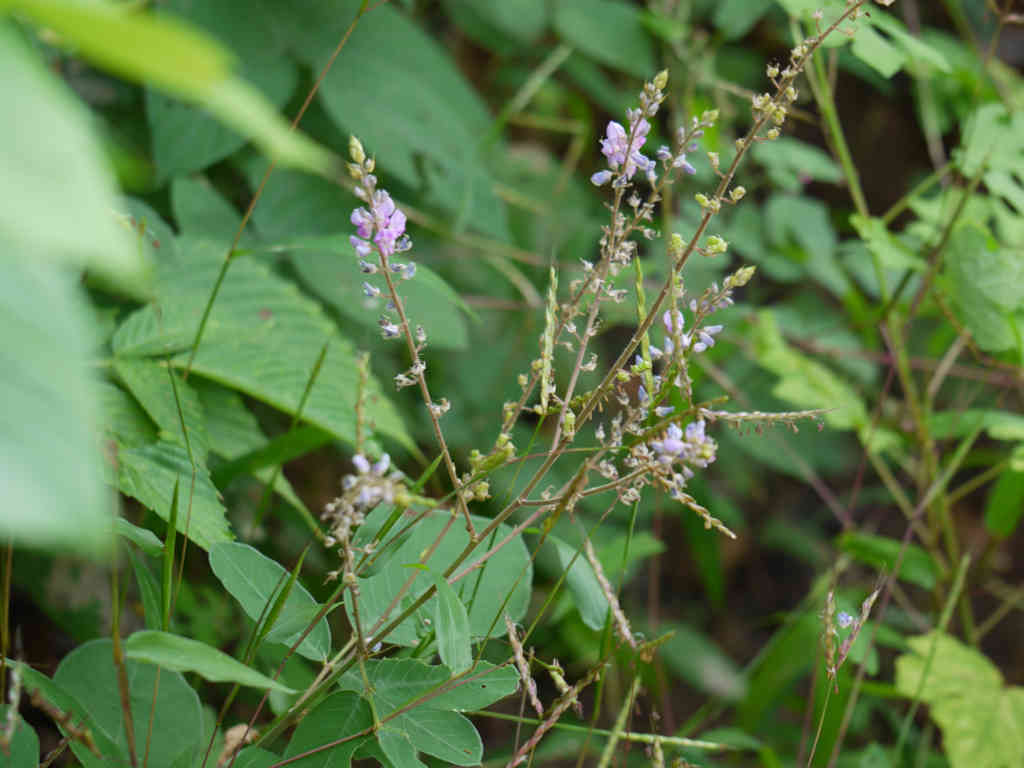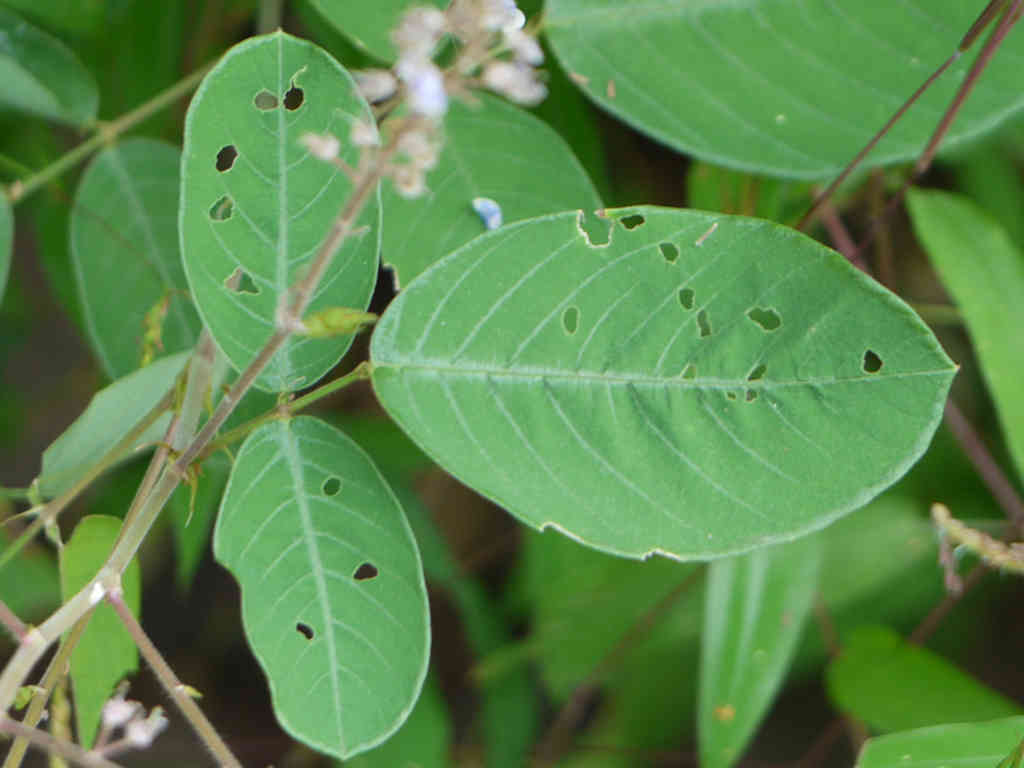|
Desmodium caudatum (Thunb.) DC. (Himalaya to S. Central & S. Japan and W. Malesia: Assam, China South-Central, China Southeast, East Himalaya, India, Japan, Jawa, Korea, Lesser Sunda Is., Malaya, Myanmar, Nansei-shoto, Nepal, Sri Lanka, Sumatera, Taiwan, Thailand, Tibet, Vietnam, West Himalaya as per POWO) Desmodium heterocarpon subsp. ovalifolium (Prain)H.Ohashi (S. China, Indo-China to Central Malesia: Borneo, Cambodia, China Southeast, Jawa, Laos, Malaya, Myanmar, Philippines, Sulawesi, Sumatera, Thailand, Vietnam as per POWO) Desmodium procumbens (Mill.) C.L.Hitchc. (Introduced) (Tropical & Subtropical America: Argentina Northwest, Arizona, Aruba, Bolivia, Brazil North, Brazil Northeast, Brazil South, Brazil Southeast, Brazil West-Central, Colombia, Costa Rica, Dominican Republic, Ecuador, El Salvador, Galápagos, Guatemala, Haiti, Honduras, Jamaica, Leeward Is., Mexico Central, Mexico Gulf, Mexico Northeast, Mexico Northwest, Mexico Southeast, Mexico Southwest, Netherlands Antilles, Nicaragua, Panamá, Peru, Puerto Rico, Suriname, Texas, Trinidad-Tobago, Venezuela, Venezuelan Antilles, Windward Is.; Introduced into: Cape Verde, Central American Pacific Is., Gulf of Guinea Is., India, Malawi, Maluku, Mexican Pacific Is., Nigeria, Philippines, Sierra Leone, Tonga, West Himalaya, Zambia as per POWO)
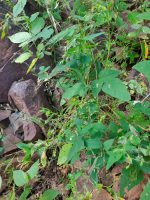 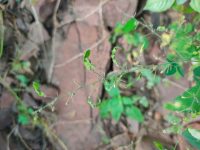 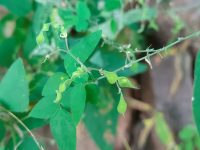
Desmodium uncinatum (Jacq.)DC. (Mexico to S. Tropical America: Argentina Northeast, Argentina Northwest, Bolivia, Brazil North, Brazil Northeast, Brazil South, Brazil Southeast, Brazil West-Central, Colombia, Costa Rica, Ecuador, El Salvador, Galápagos, Guatemala, Honduras, Mexico Central, Mexico Gulf, Mexico Northeast, Mexico Northwest, Mexico Southeast, Mexico Southwest, Nicaragua, Paraguay, Peru, Uruguay, Venezuela; Introduced into: Angola, Cameroon, Cook Is., Ethiopia, Ghana, Hawaii, India, Jawa, Kenya, Malawi, Marquesas, New Guinea, New South Wales, Nigeria, Queensland, St.Helena, Tonga, Zimbabwe as per POWO) .
As per efi thread :
There will be a sterile terminal segment on the fruits in Alysicarpus and is lacking in Desmodium. I think this demarcation will make our identification more easier than considering the the floral characters .
Keys from Flora of Bhutan
1. Petioles broadly (up to 1 cm) winged; leaves all 1-foliate 1. D. triquetrum (syn. of Tadehagi triquetrum)
+ Petioles unwinged; leaves 3-foliate or sometimes 1-foliate …… 2
2. Inflorescence racemiform; flowers concealed by pairs of leafy orbicular persistent bracts …. 2. D. pulchellum (syn. of Phyllodium pulchellum)
+ Inflorescence umbellate, corymbose, racemose or paniculate; bracts conspicuous only in bud, ovate-lanceolate, caducous, not leafy …. 3
3. Stems triangular in section; inflorescence of axillary shortly stalked umbels or corymbs ….. 3. D. triangulare (syn. of Dendrolobium triangulare) + Stems terete; inflorescence of racemes or panicles …… 4
4. Leaves 1-foliate or, if 3-foliate, lateral leaflets less than half size of terminal leaflet (see also D. styracifolium); keel petals with short lateral appendages; pods dehiscing along lower suture; seeds with a cup-shaped aril …… Species 4 (D. motorium (Houttuyn) Merrill; D. gyrans (L.f.) DC., including var. roylei (Wight & Arnott) Baker, Codariocalyx motorius (Houttuyn) Ohashi) syn. of Codariocalyx motorius & 5 (D. gyroides (Link) DC.; Codariocalyx gyroides (Link) Hasskarl.) sy. of Codariocalyx gyroides
+ Leaves 1-foliate or 3-foliate but lateral leaflets more than half size of terminal leaflet; keel petals unappendaged; pods breaking up into 1-seeded segments (dehiscing along lower suture only in D. microphyllum); seeds exarillate (or bearing a rim-like aril in D. microphyllum) …. 5
5. Leaves 1-foliate ………. 6
+ Leaves 3-foliate (sometimes 1-foliate in D. microphyllum and D. sryracifolium) ………. 7
6. Herbs, usually prostrate, or weak shrubs; leaves broader than long …….. 9. D. reniforme (synonym for Desmodium
renifolium (L.)Schindl.) + Shrubs; leaves longer than broad …. Species 6 (D. oblongum Bentham.), 7 (D. gangeticum (L.) DC.) & 8 (D. velutinum (Willdenow) DC.; D. lanfoiium DC.)
7. Flowers borne on wood of previous season …… 10. D. oojeinense
+ Flowers borne on growth of current season (inflorescences sometimes on wood of previous season in D. elegans) … 8
8. Leaflets 1.5 cm or less, broadly oblong, orbicular or obovate Species 11 (D. microphyllum (Thunberg) DC.; D. parvifolium DC.) & 12 (D. triflorum (L.) DC.)
+ Leaflets more than 2 cm, usually ovate or elliptic (rarely orbicular in D. styracifolium) …… .. 9
9. Pods indented along lower suture only ….. .. 10
+ Pods indented along both sutures …… .. 13 10. Indentations between pod segments shallow, less than half width of pod 11
+ indentations between pod segments deep, almost reaching upper suture 12
11. Leaflets acute or acuminate …………….Species 13 (D. kulhaitense Prain), 14 (D. khasianum Prain) & 15 (D. elegans DC.; D. tilitfolium (D. Don) Wall., D. oxyphyllum sensu F.B.I. Dz)
+ Leaflets subacute, obtuse or rounded at apex ……… Species 16 (D. heterocarpon (L.) DC.; D. polycarpum (Poiret) DC.) & 17 (D. styracifolium (Osbeck) Merrill; D. retroflexum (L.) DC., D. capitarum (Burman f.) DC.)
12. Leaflets ovate or ovate-elliptic, acuminate or acute ….. .. Species 18 (D. podocarpum DC.; D. oxyphyllum DC. syn. of Hylodesmum podocarpum), 19 (D. laxum DC.; D. podocarpum DC. var. Iaxum (DC.) Baker syn. of Hylodesmum laxum), 20 (D. williamsii Ohashi) & 21 (D. duclouxii Pampanini)
+ Leaflets elliptic or obovate, obtuse or acute ………… 22. D. concinnum 13. Segments of pods +/- isodiametric ….. Species 23 (D. multiflorum DC.; D. floribundum (D. Don.) G. Don) & 24 (D. sequax Wall.; D. sinuatum (Miquel) Baker)
+ Segments of pod longer than broad …… Species 25 (D. confertum DC.), 26 (D. caudatum (Thunberg) DC.; D. laburmfolium (Poiret) DC.) & 27 (D. laxiflorum DC.)
.
.
From Floral Database of Tamilnadu :
.
Species with description & pictures in Flowers of India as on 31.1.14:
.
Species with description & keys in Flora of Pakistan :
Desmodium concinnum DC. Desmodium elegans DC. Desmodium gangeticum (Linn.) DC. Desmodium laxiflorum DC. Desmodium microphyllum (Thunb.) DC. Desmodium motorium (Houtt.) Merrill (syn. of Codariocalyx motorius (Houtt.) H.Ohashi) Desmodium multiflorum DC. Desmodium podocarpum DC. (syn. of Hylodesmum podocarpum (DC.) H.Ohashi & R.R.Mill) Desmodium triangulare (Retz.) Merr. (syn. of Dendrolobium triangulare (Retz.) Schindl.) Desmodium triflorum (Linn.) DC. .
.
1997 IUCN Red List of Threatened Plants edited by Kerry Scott Walter, Harriet J. Gillett-
Desmodium wynaadense Gamble synonym of Desmodium ferrugineum subsp. wynaadense (Gamble) H.Ohashi– Kerala T Tamilnadu,
Desmodium travancoricum Bourd.- Kerala .
An Excursion Flora of Central Tamilnadu, India By K. M. Matthew (1995)- Details with Keys–
.
Forest Plants of Eastern India By Amal Bhusan Chaudhuri (1993)- Details with Keys–
Desmodium khasianum Prain,
Desmodium racemosum (Thunb.) DC. synonym of Hylodesmum podocarpum subsp. oxyphyllum (DC.) H.Ohashi & R.R.Mill,
Desmodium pseudotriquetrum DC. synonym of Tadehagi pseudotriquetrum (DC.) Y.C.Yang & P.H.Huang, Desmodium pulchellum (L.) Benth. synonym of Phyllodium pulchellum (L.) Desv.,
Desmodium cephalotes Wall. synonym of Dendrolobium triangulare subsp. triangulare (Retz.) Schindl., Desmodium triquetrum (L.) DC. synonym of Tadehagi triquetrum (L.) H.Ohashi,
Desmodium triflorum (L.) DC.,
Desmodium latifolium (Ker. Gawl.) DC. is a synonym of Desmodium velutinum subsp. velutinum (Willd.) DC. .
Flora of Davanagere District, Karnataka, India By B. K. Manjunatha, V. Krishna, T. Pullaiah (2004)- Details with Keys– .
Flora of Medak District, Andhra Pradesh, India By T. Pullaiah, Chintala Prabhakar, B. Ravi Prasad Rao (1998)- Details with Keys–
Desmodium pulchellum (L.) Benth. synonym of Phyllodium pulchellum (L.) Desv. &
Desmodium triflorum (L.) DC. . Desmodium, Codariocalyx, Dendrolobium, Dicerma, Hylodesmum, Phyllodium & Tadehagi : 1 post by 1 author.
I have updated eFI (efloraofindia) pages on Desmodium, Codariocalyx, Dendrolobium, Dicerma, Hylodesmum, Phyllodium & Tadehagi Attempts have been made to incorporate most of the species available in India & nearby areas with details & keys directly or through links as far as possible. It’s quite possible that there may be some discrepancy in the accepted names & synonyms taken from other links. Species discussed so far in efloraofindia are given at the bottom of the page in the form of links against Subpages. On clicking them one can see all the details. Any comments/ corrections are welcome. .
Ototropis, a Genus Separated from Desmodium. ?? : 4 posts by 2 authors.
Thanks, … Why question mark?
I mean names are going to be changed ? Ok .
Desmodium update : 7 posts by 3 authors.
Now there is no Indian Desmodium species.
All the species have been separated into different old and new genera.
For example Desmodium laxiflorum is now Sohmaea laxiflora.
Yes …! A few more new names I guess! Grona, Huangtcia, Hylodesmum, Leptodesmia, Ototropis,
Phyllodium, Pleurolobus, Polhillides, Tadehagi and Tateishia! And only one left is Desmodium oojeinense
I guess! Desmodium oojeinense is now Ougeinia oojeinensis So the history of Desmodium is erased?😁 There are still American Desmodiums. Desmodium scorpiurus, for example, is natrualized in India. At least one. . Etymology of the genus name Grona: From Dave’s Botanary, perhaps etymology of Gronophyllum helps. Greek grono means cave; but I am not confident whether Grona is related to grono !! I think the origin of Grona is from “grön”. Something to do with “green” colour of being fresh and leafy. But I need to know the morphological features of this genus to understand. Under its original description it doesnt talk about the colour.
This is just a guess work.
There is a book, Plant names and their meanings. Perhaps this may help I tend to agree with … Polish origin. Clusters seems to be suggested by this also epithet is based on the Greek for eroded or grooved leaf, referring to the praemorse leaflet tips,; ref etymology of palms On etymology of palms, I also found this: green (v.) There is a book called, Dictionary of Plant names and their meanings. If someone has access to it, then t will be helpful. Thanks very much – … for the possible meanings / etymology.
I will wait for some more time until we all zero in on the same meaning.
Thanks … for pointing to the book – Plant names and their meaning. If someone has access to that book, they will be able to help with the meaning. I am not able to finalize the exact meaning. We have multiple meanings in this thread. I was expecting it to be found in protologue of the genus Grona, or of any Grona spp., as is normally found.
|
Desmodium
Updated on December 24, 2024

